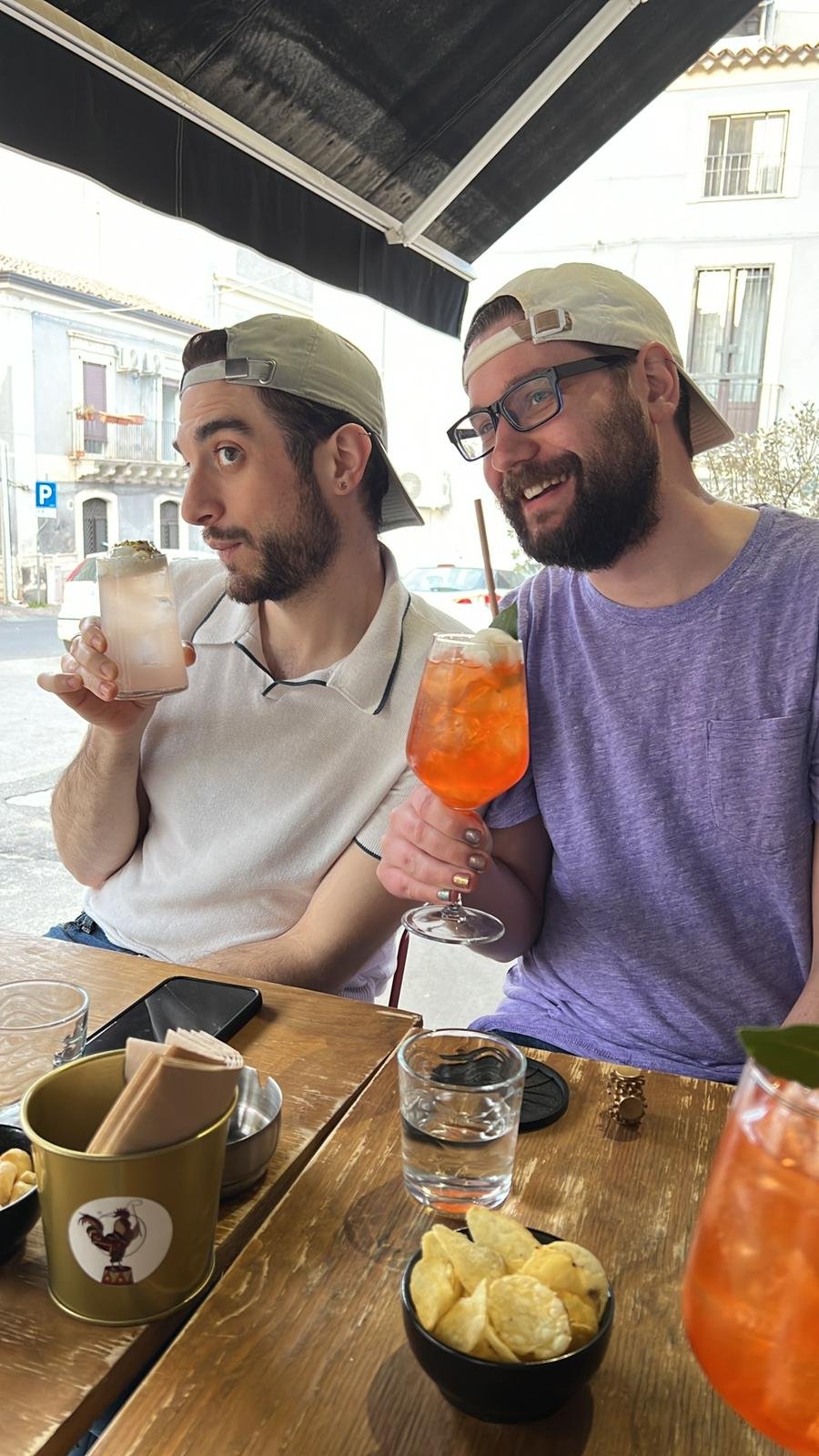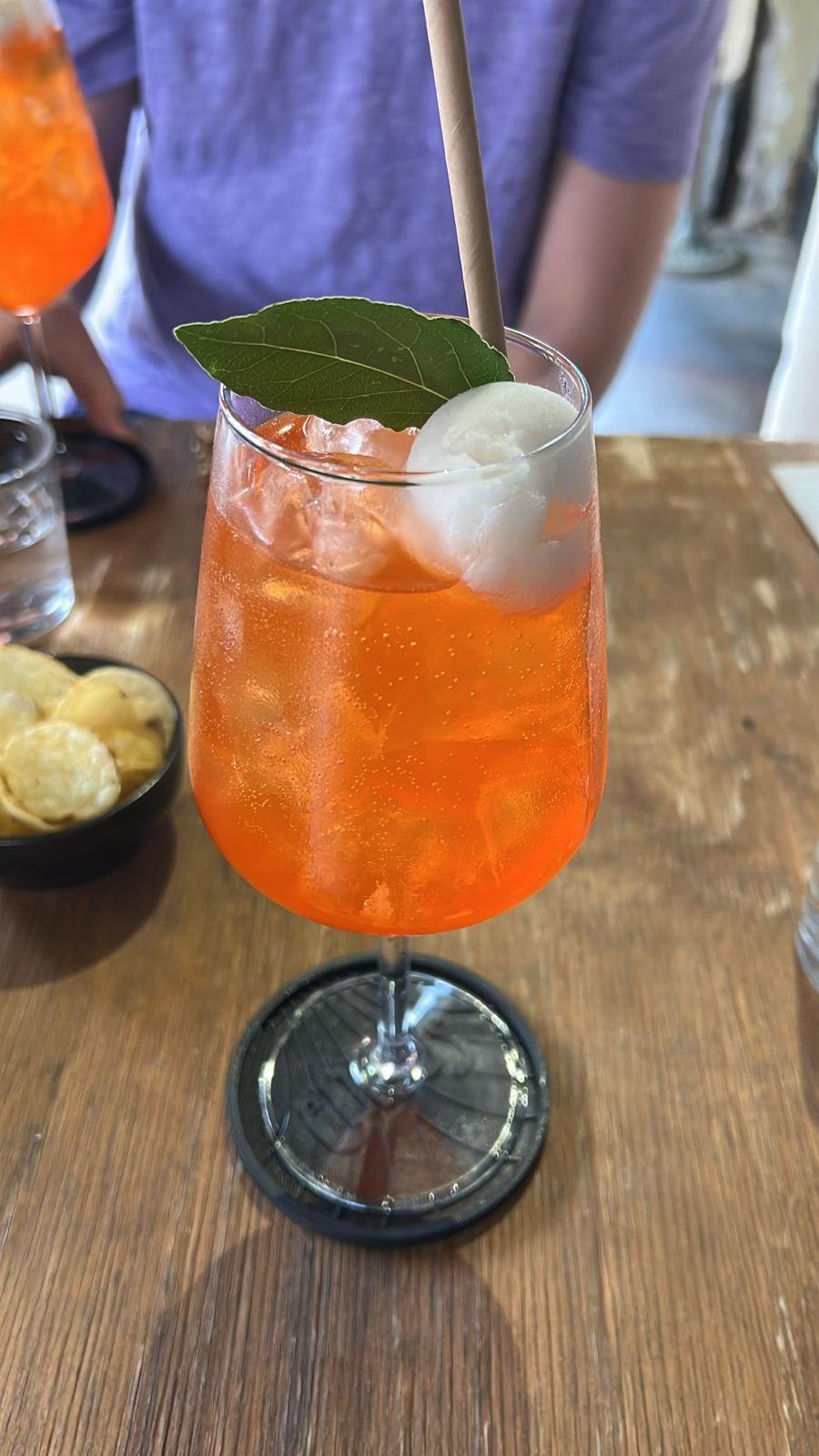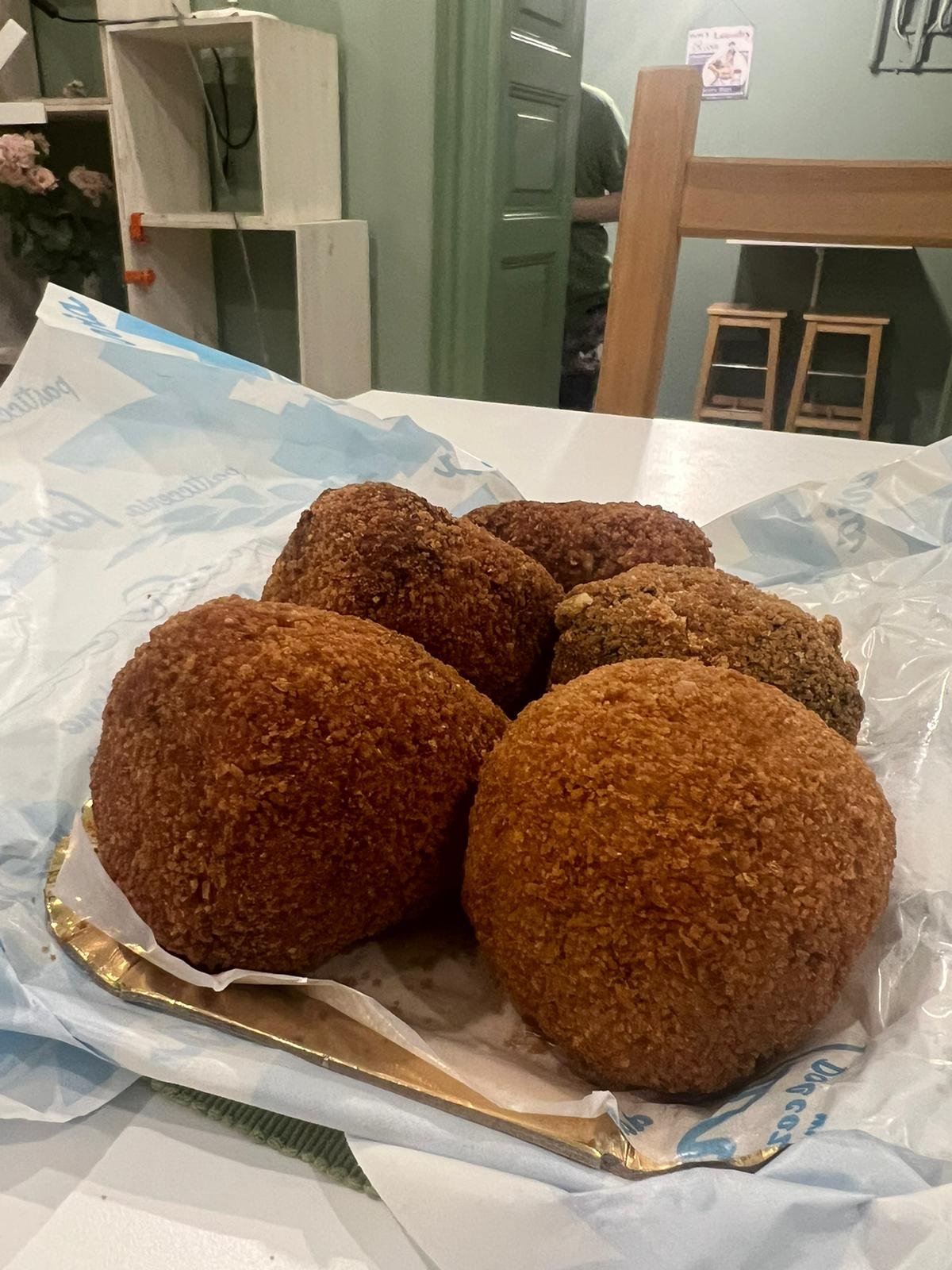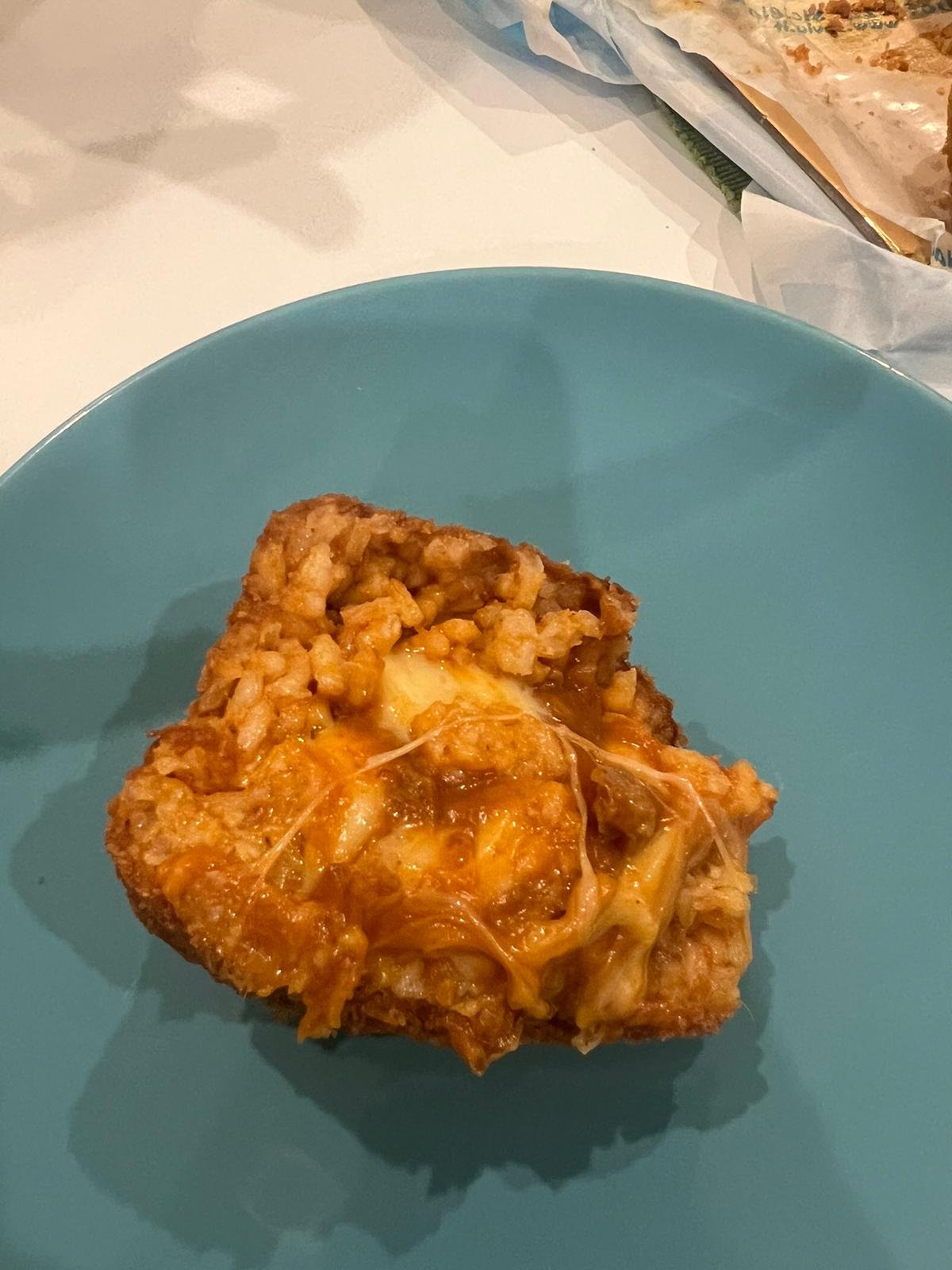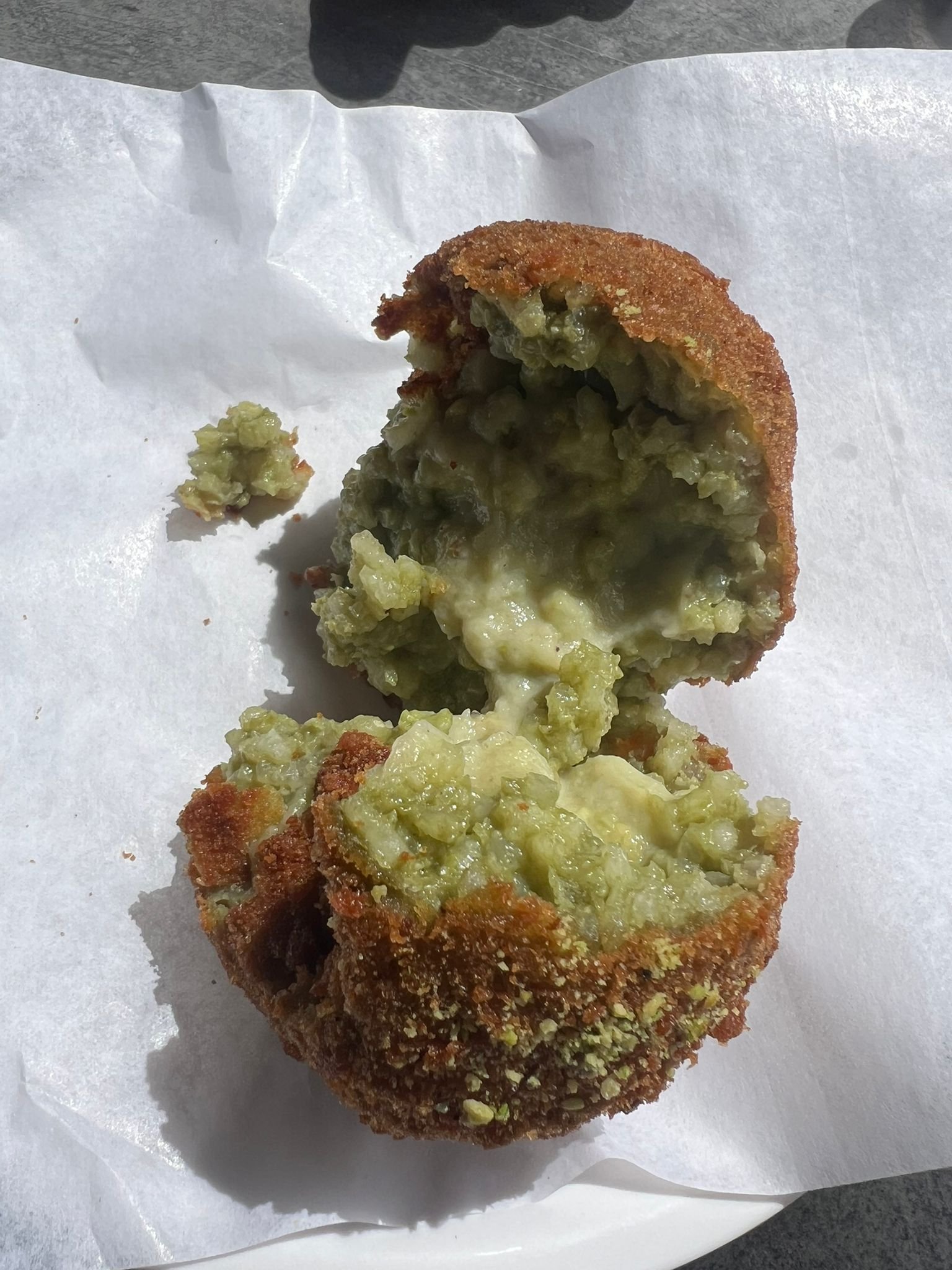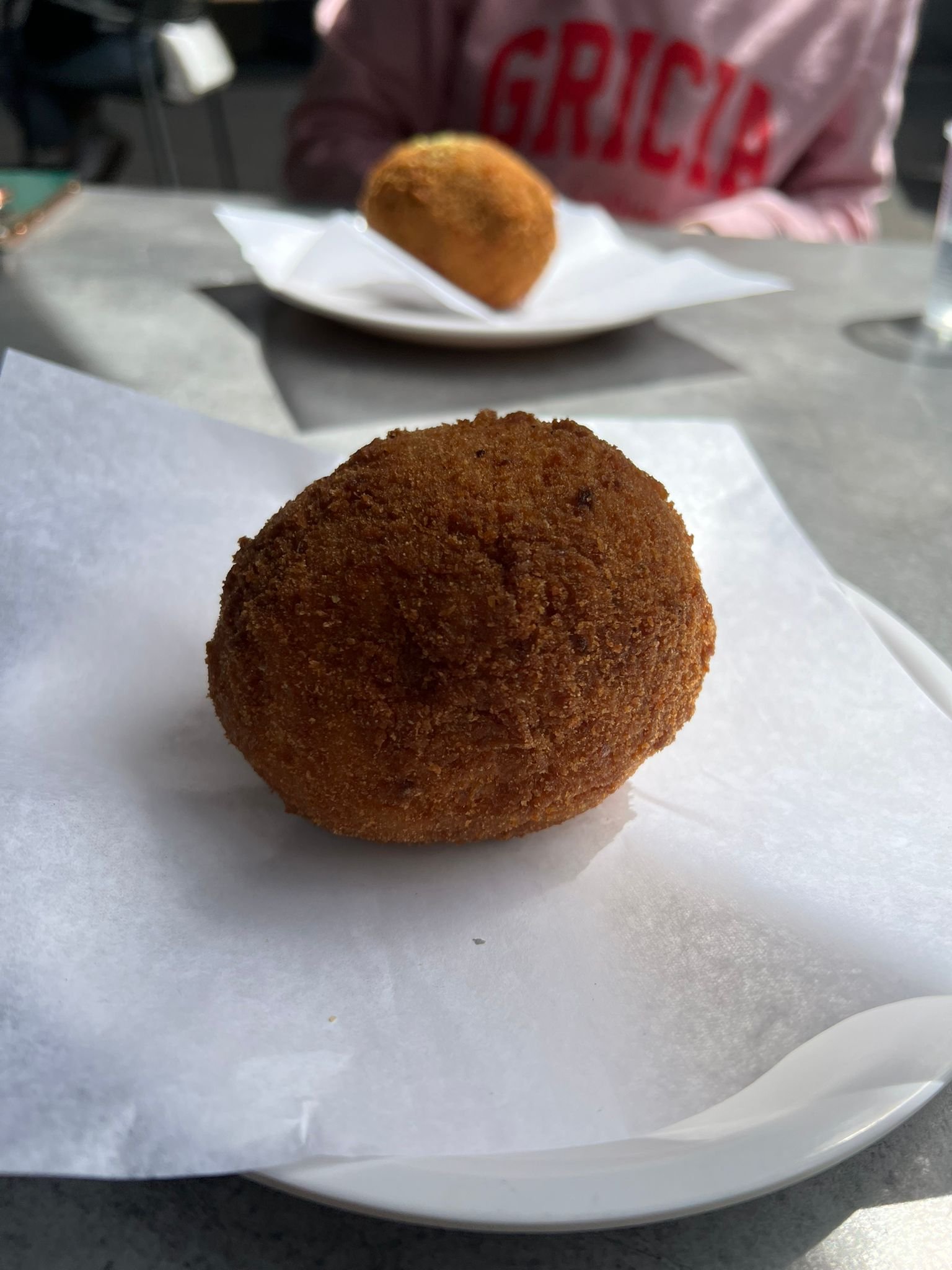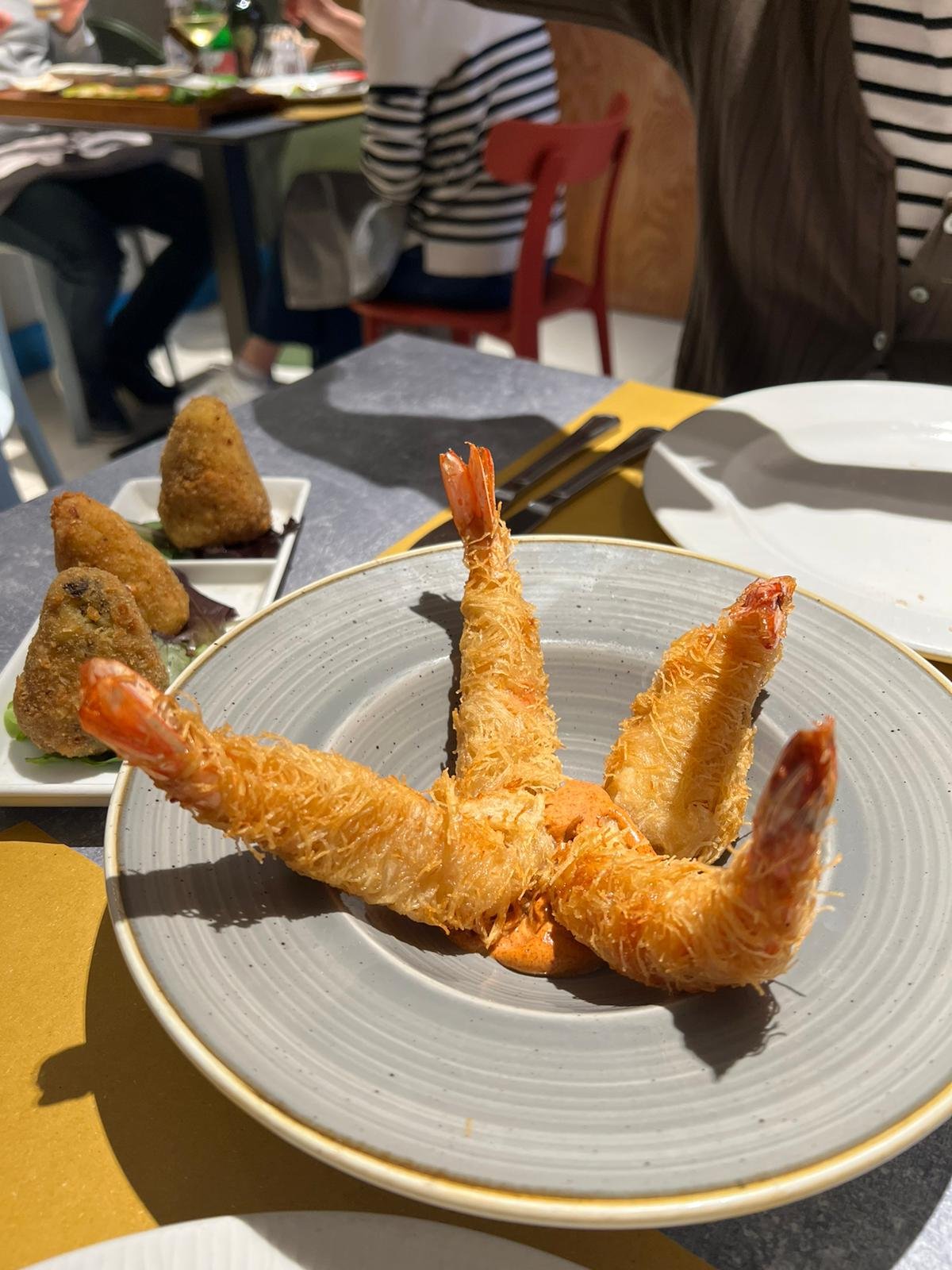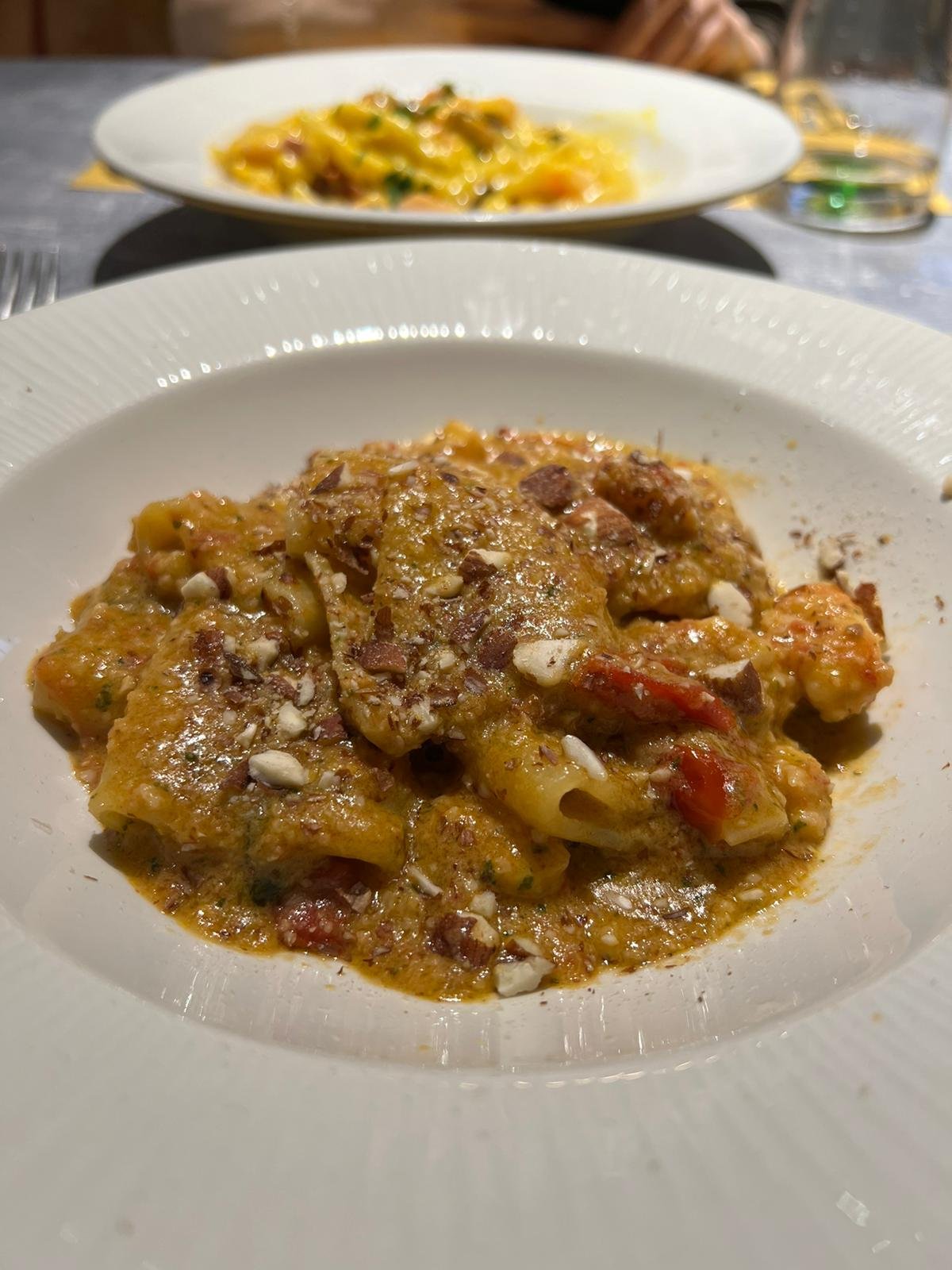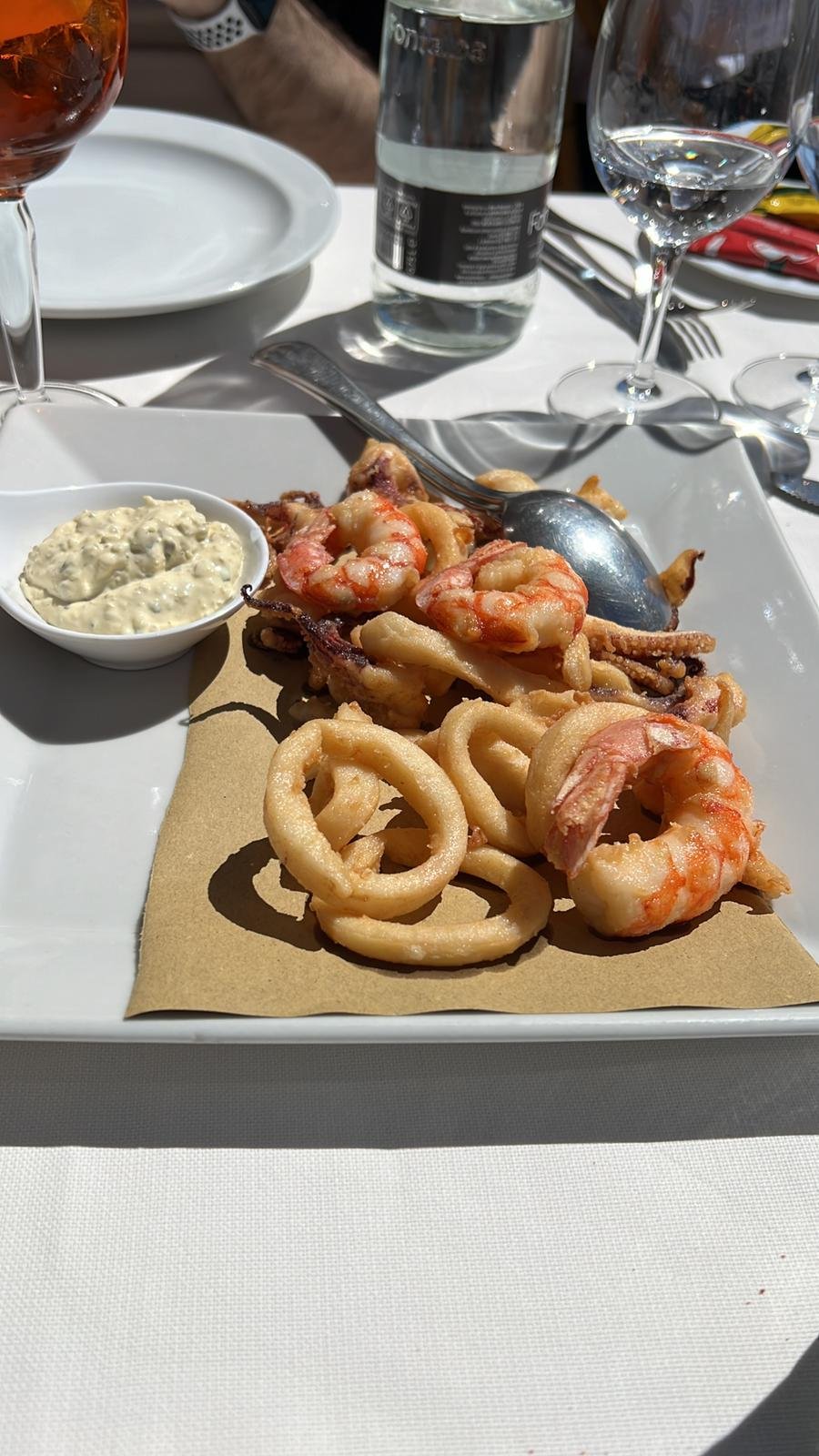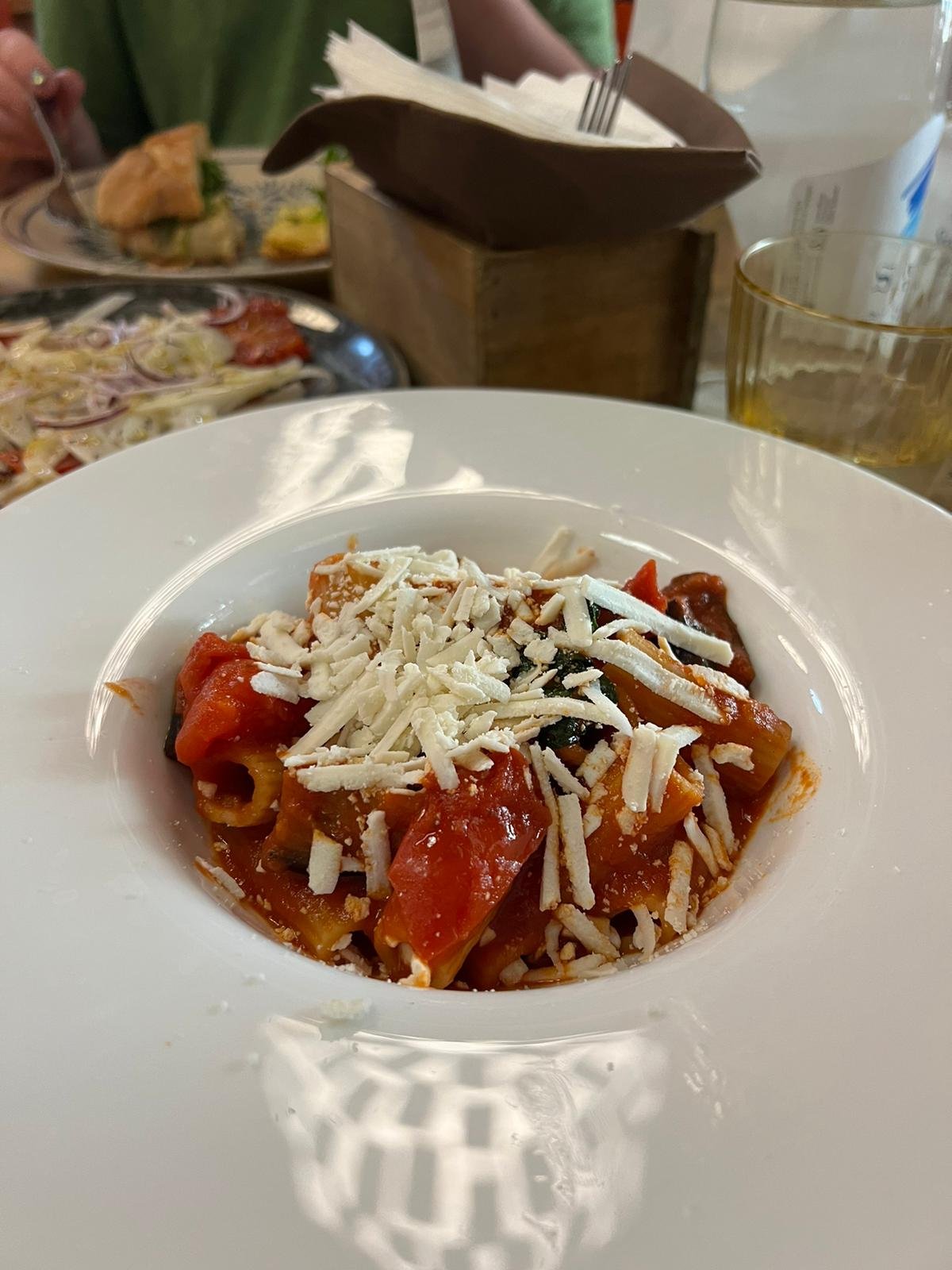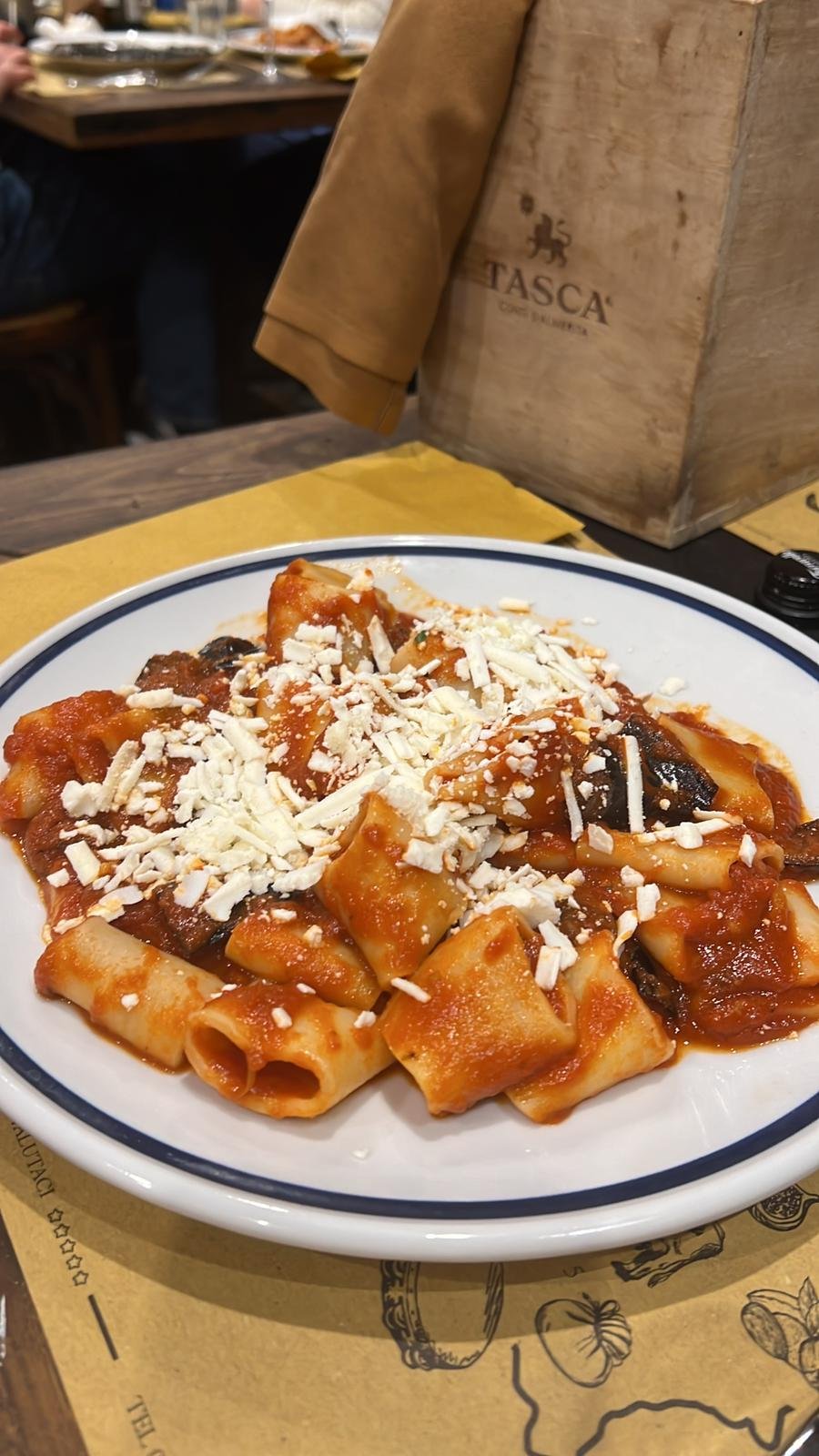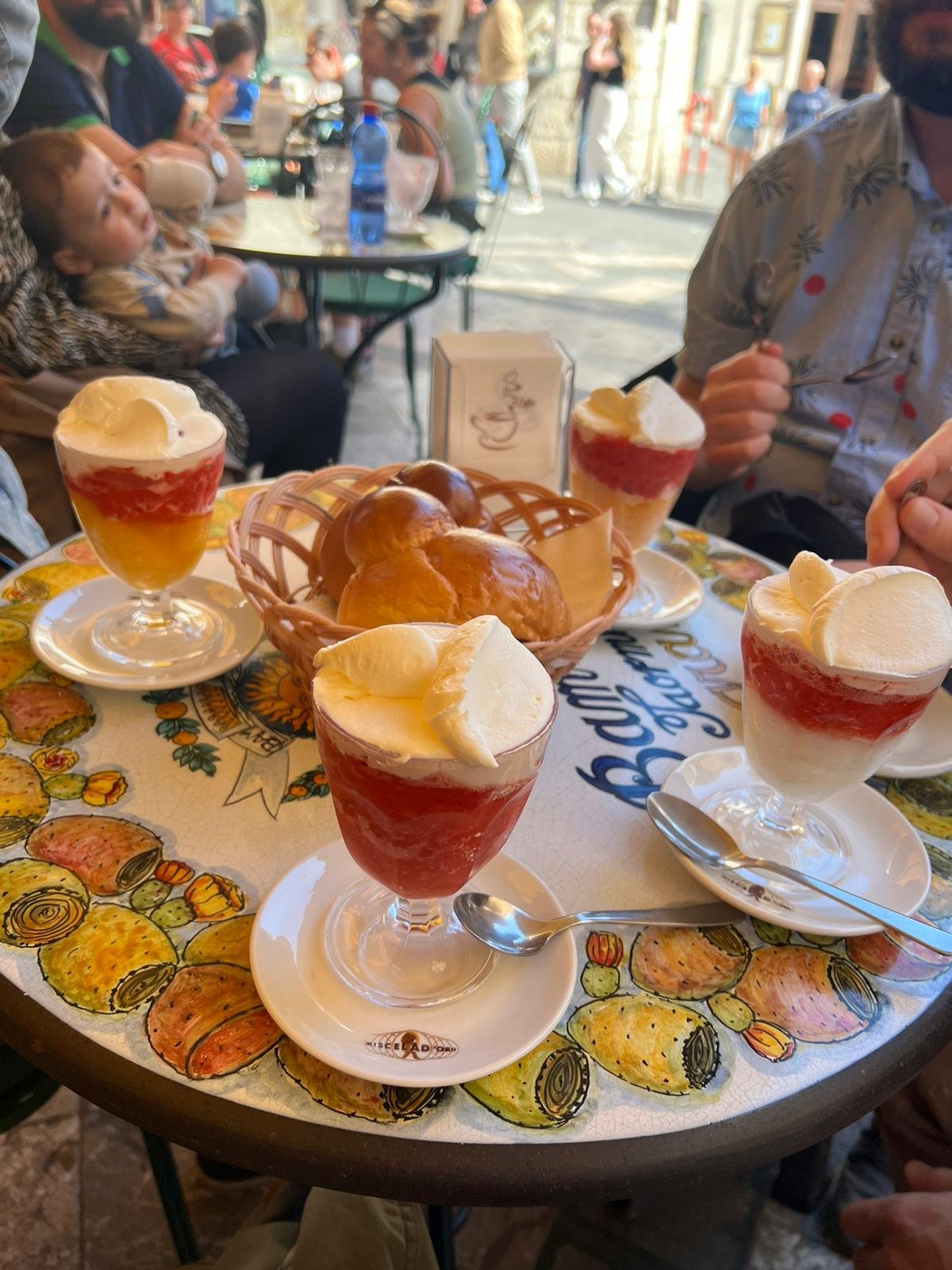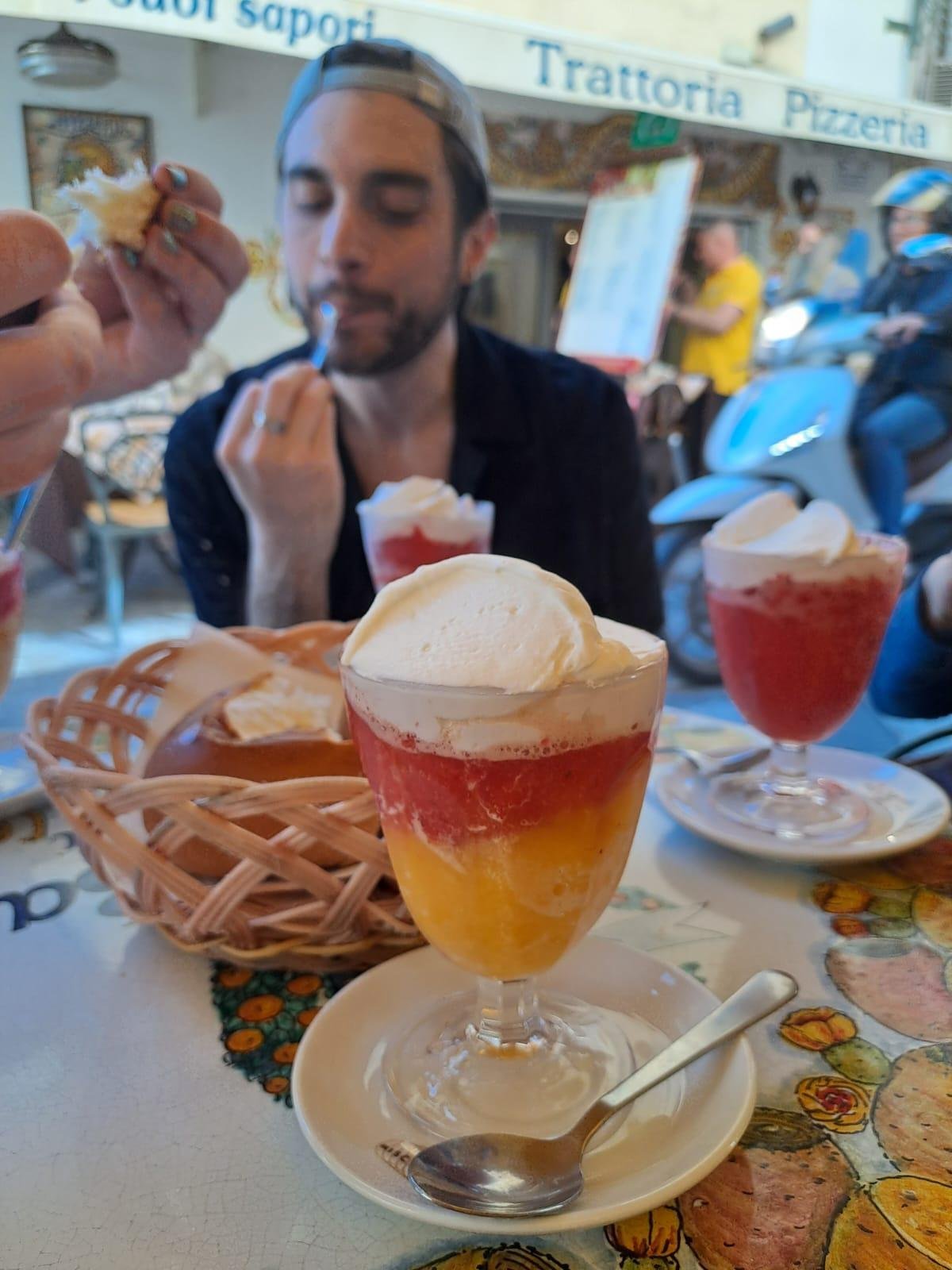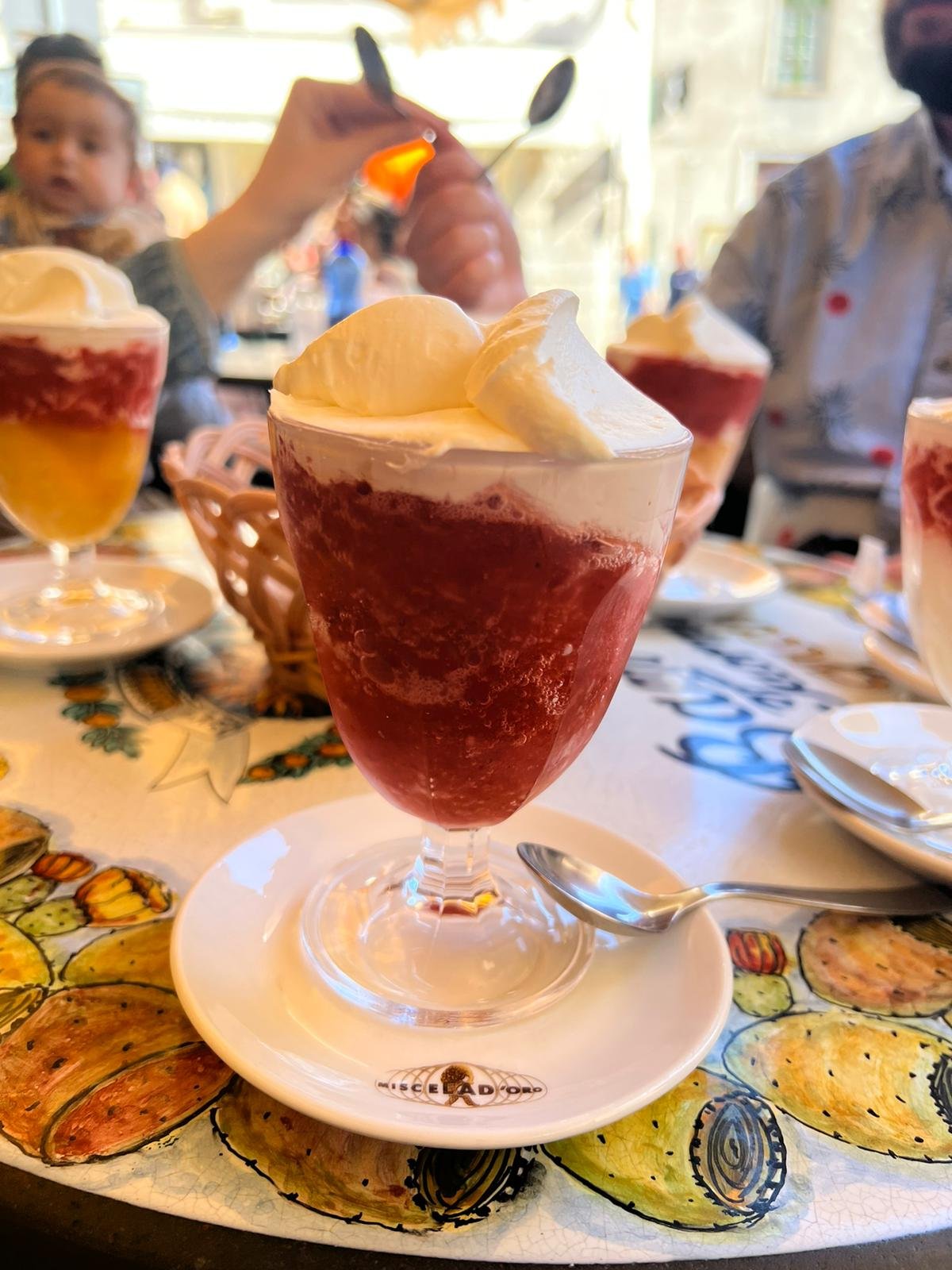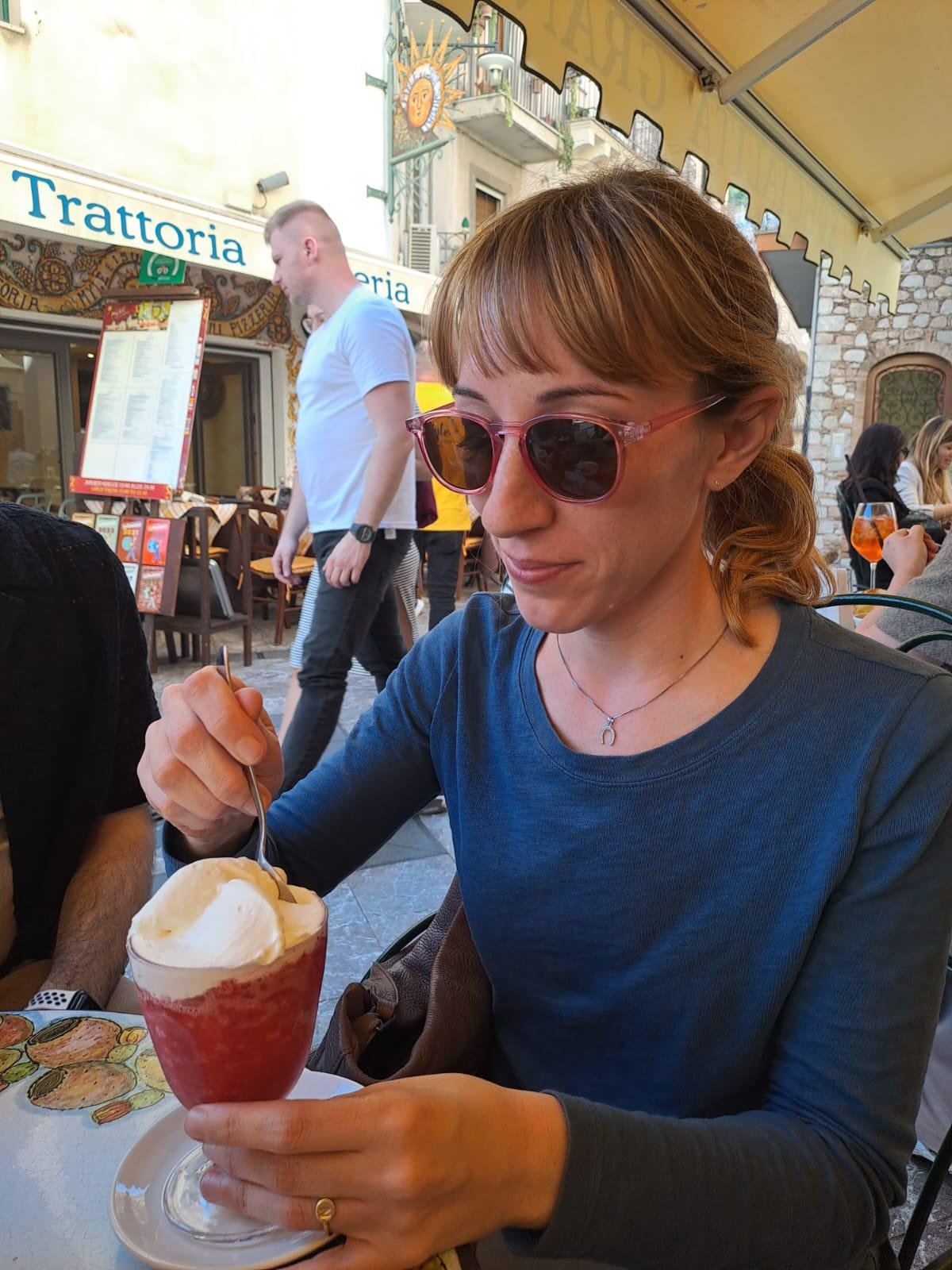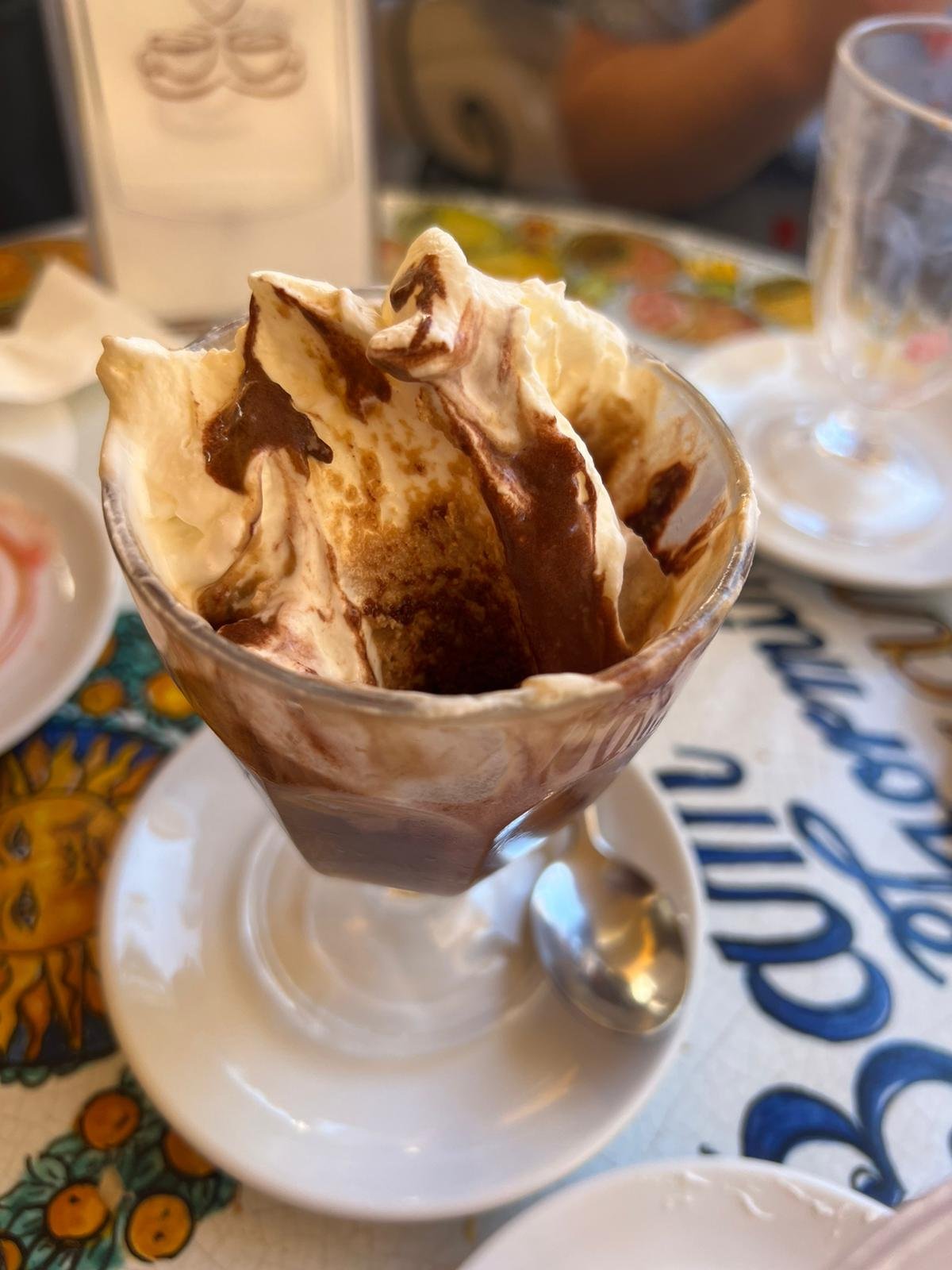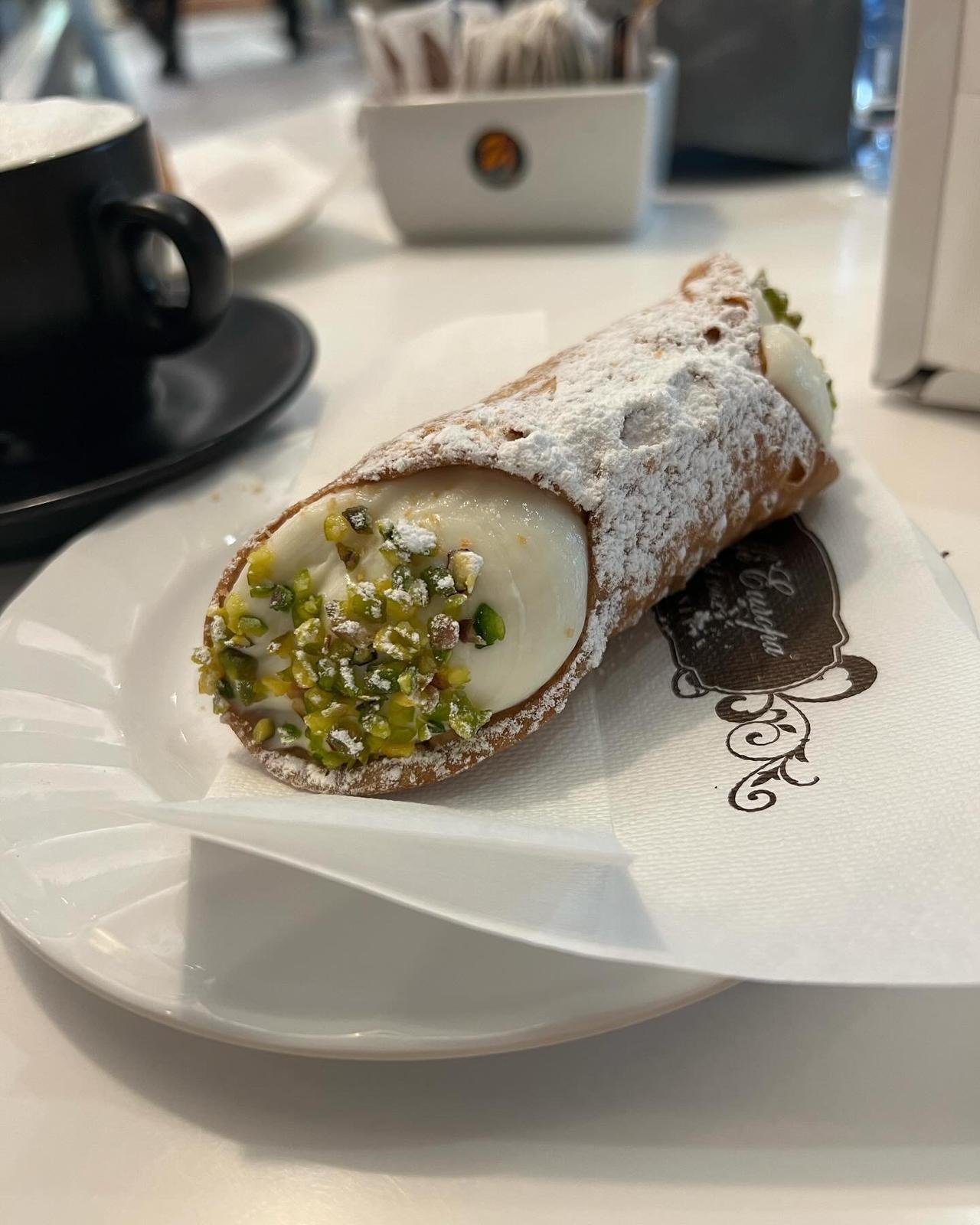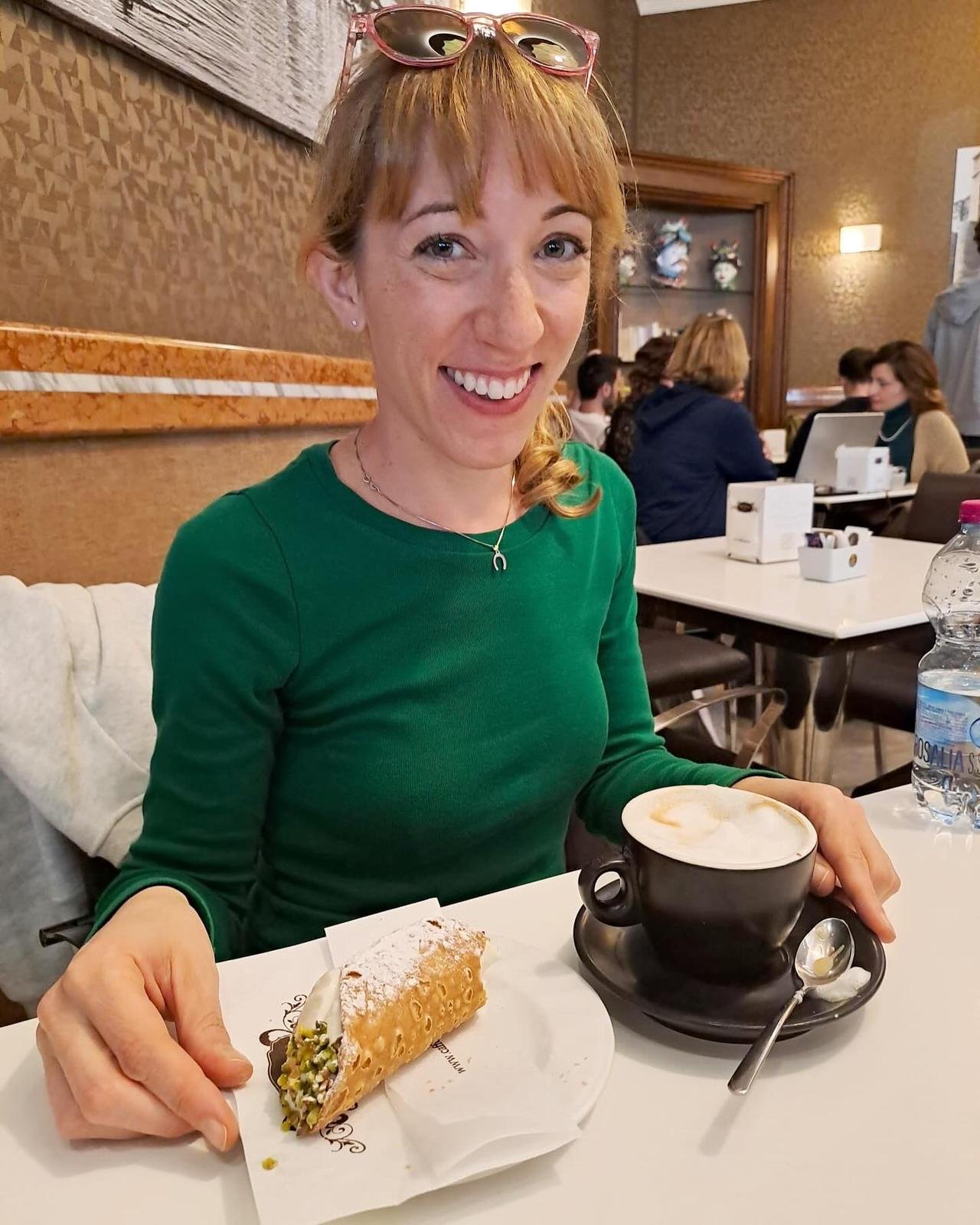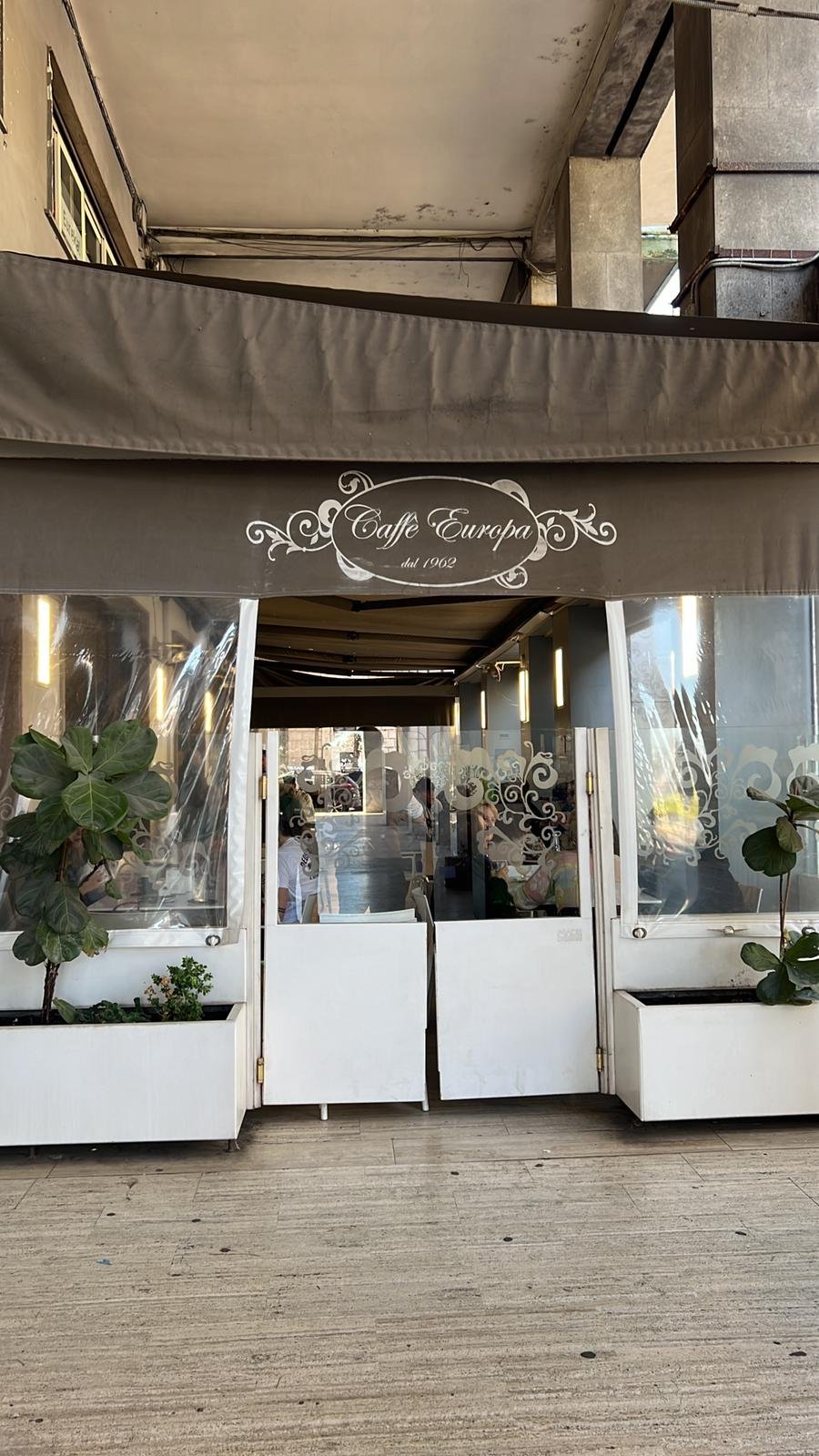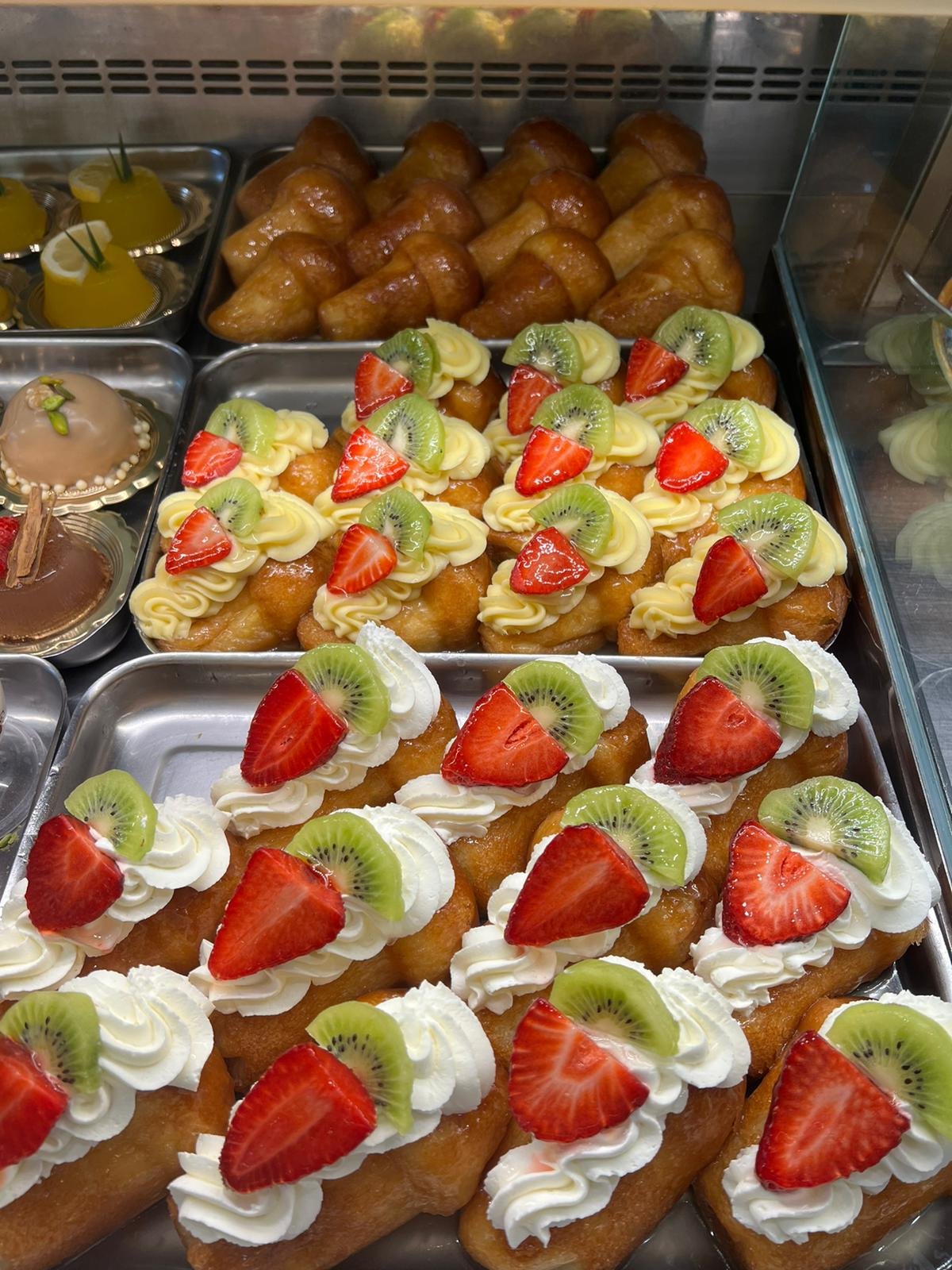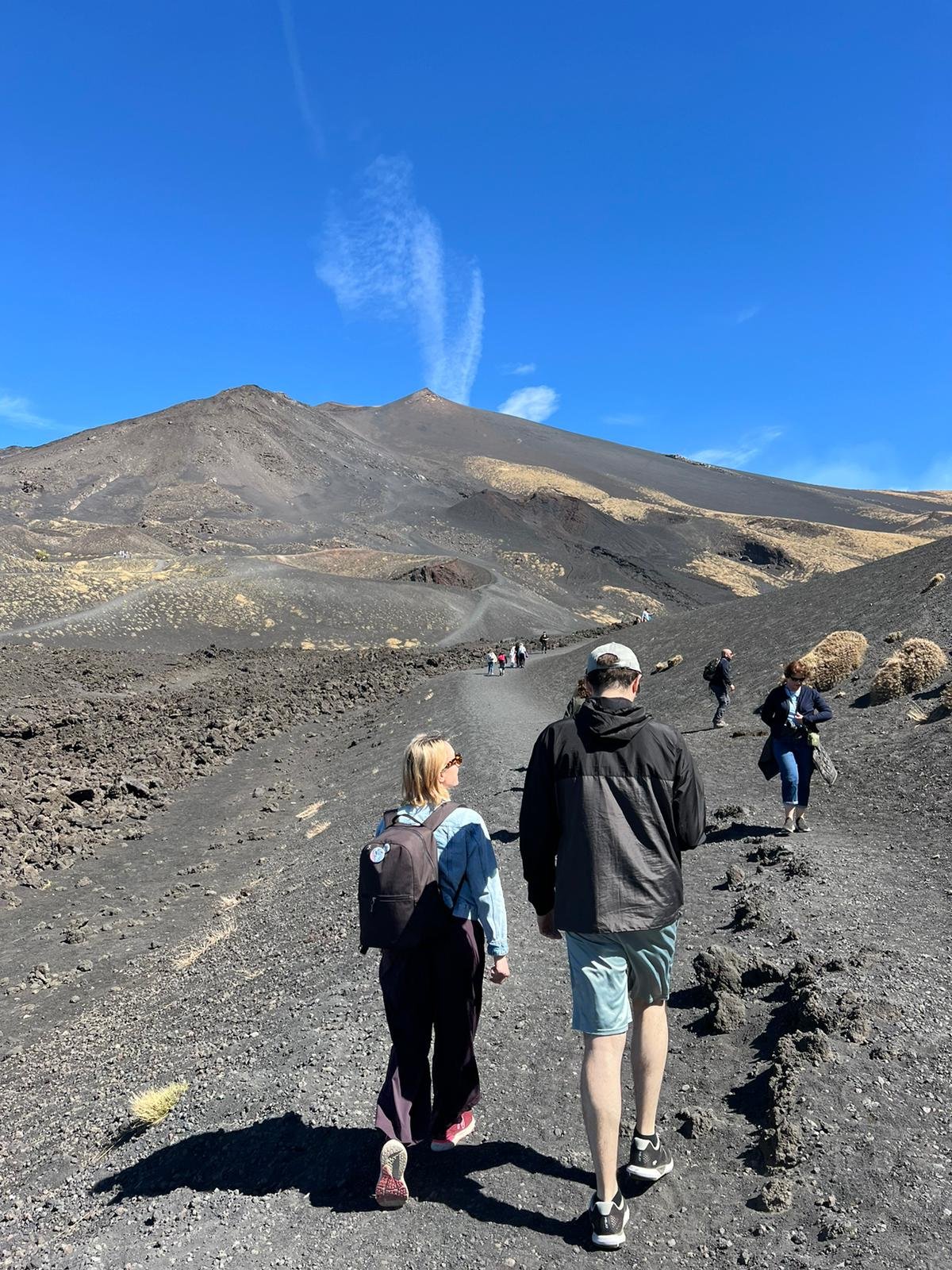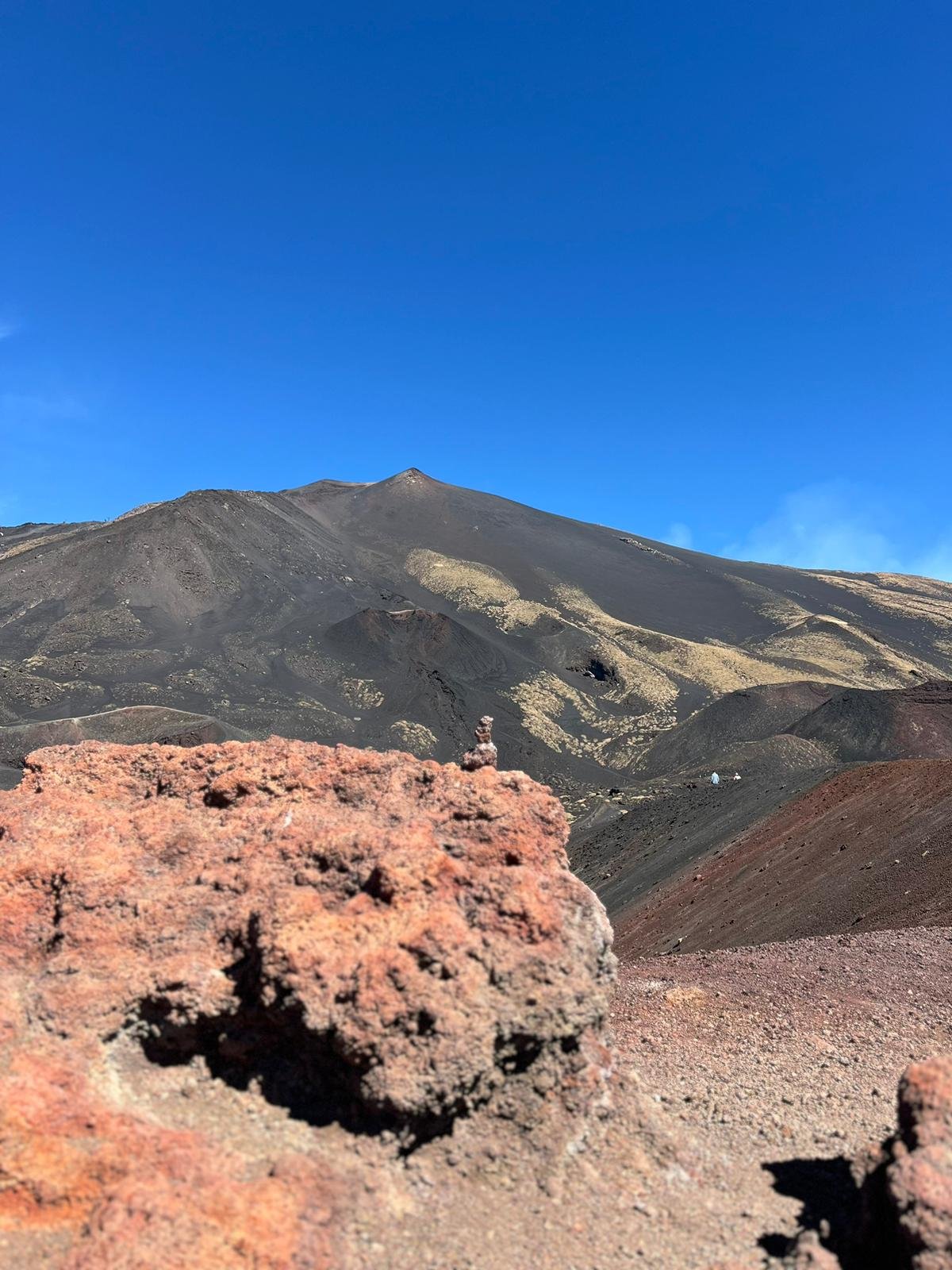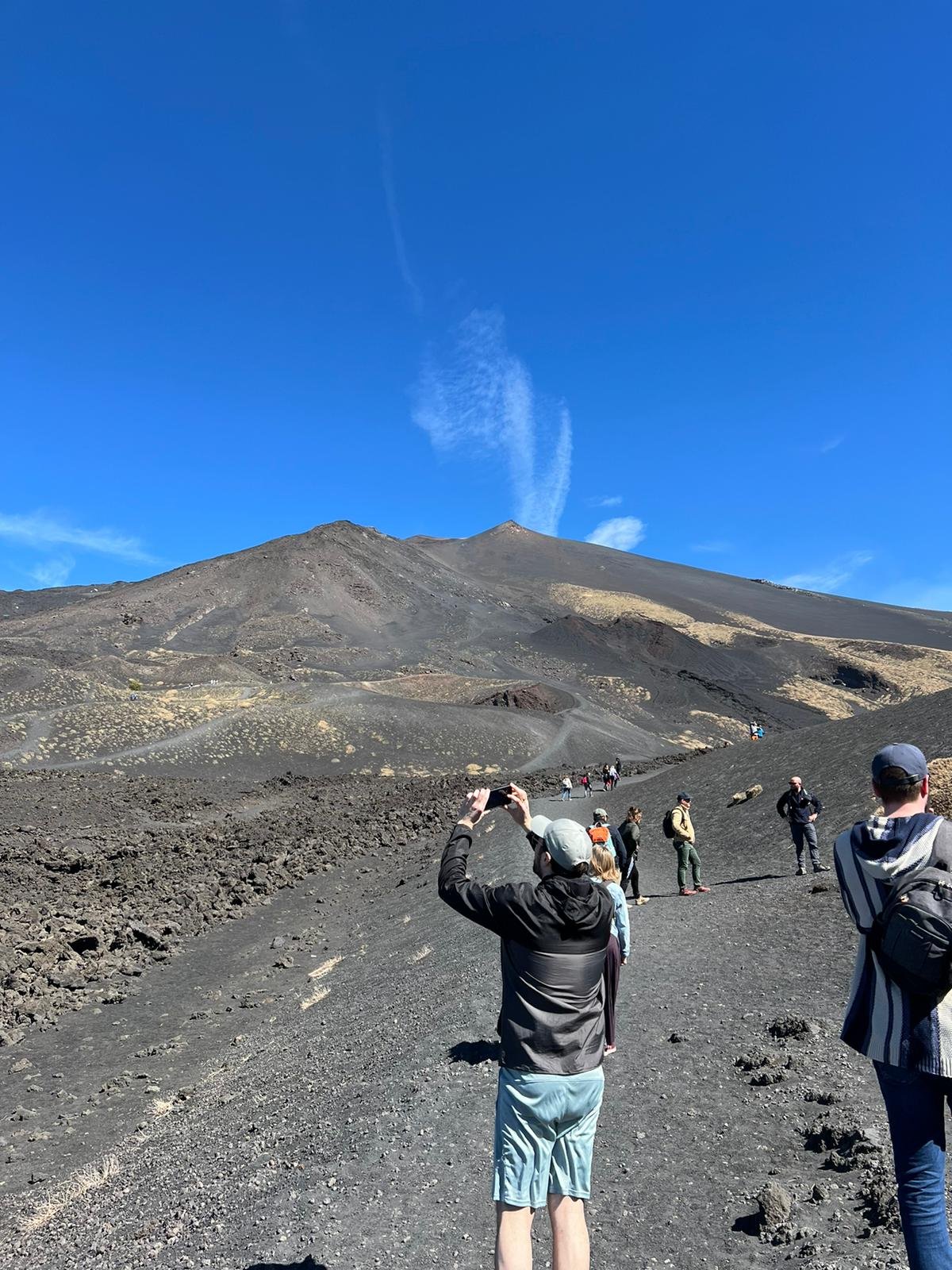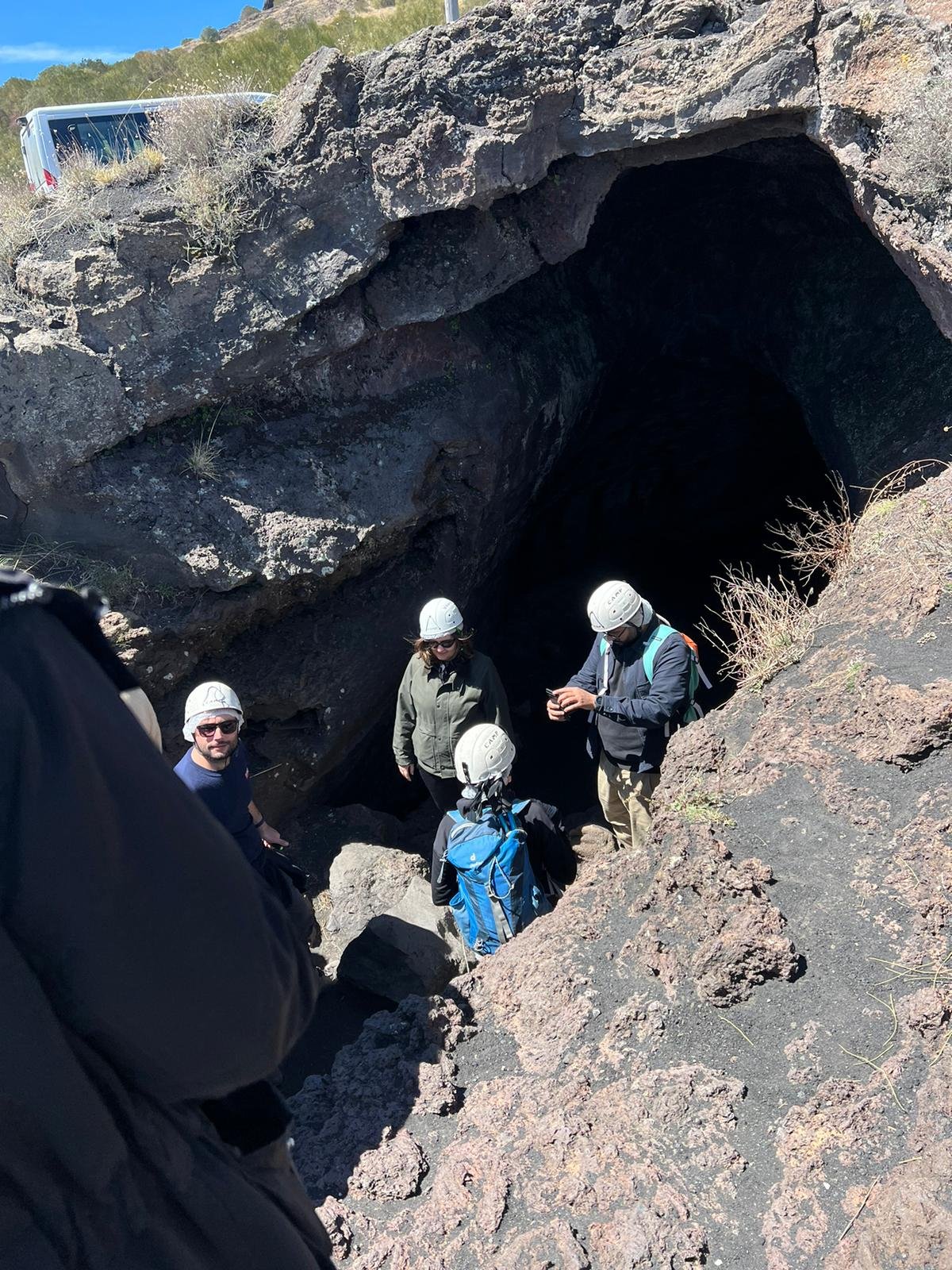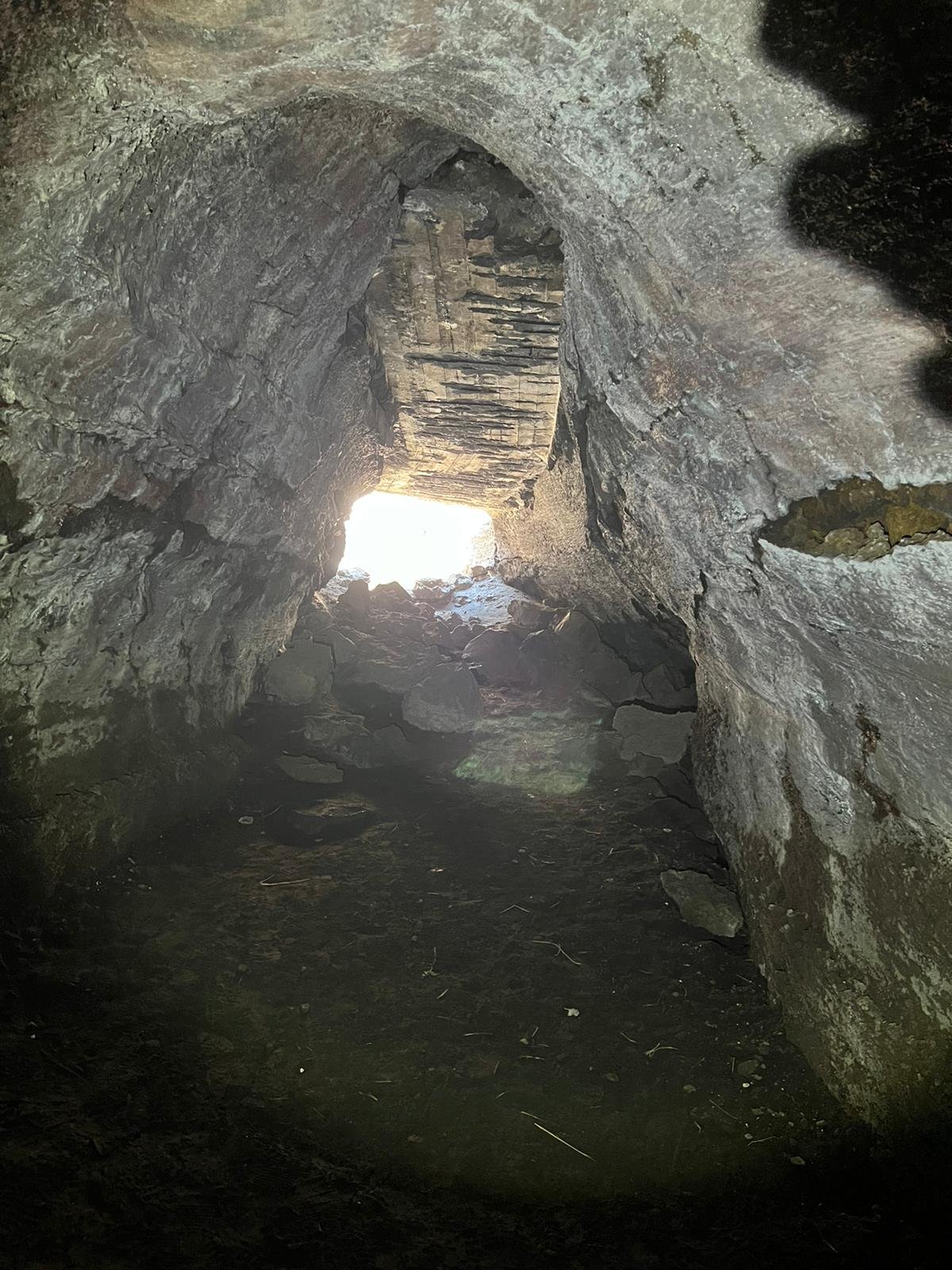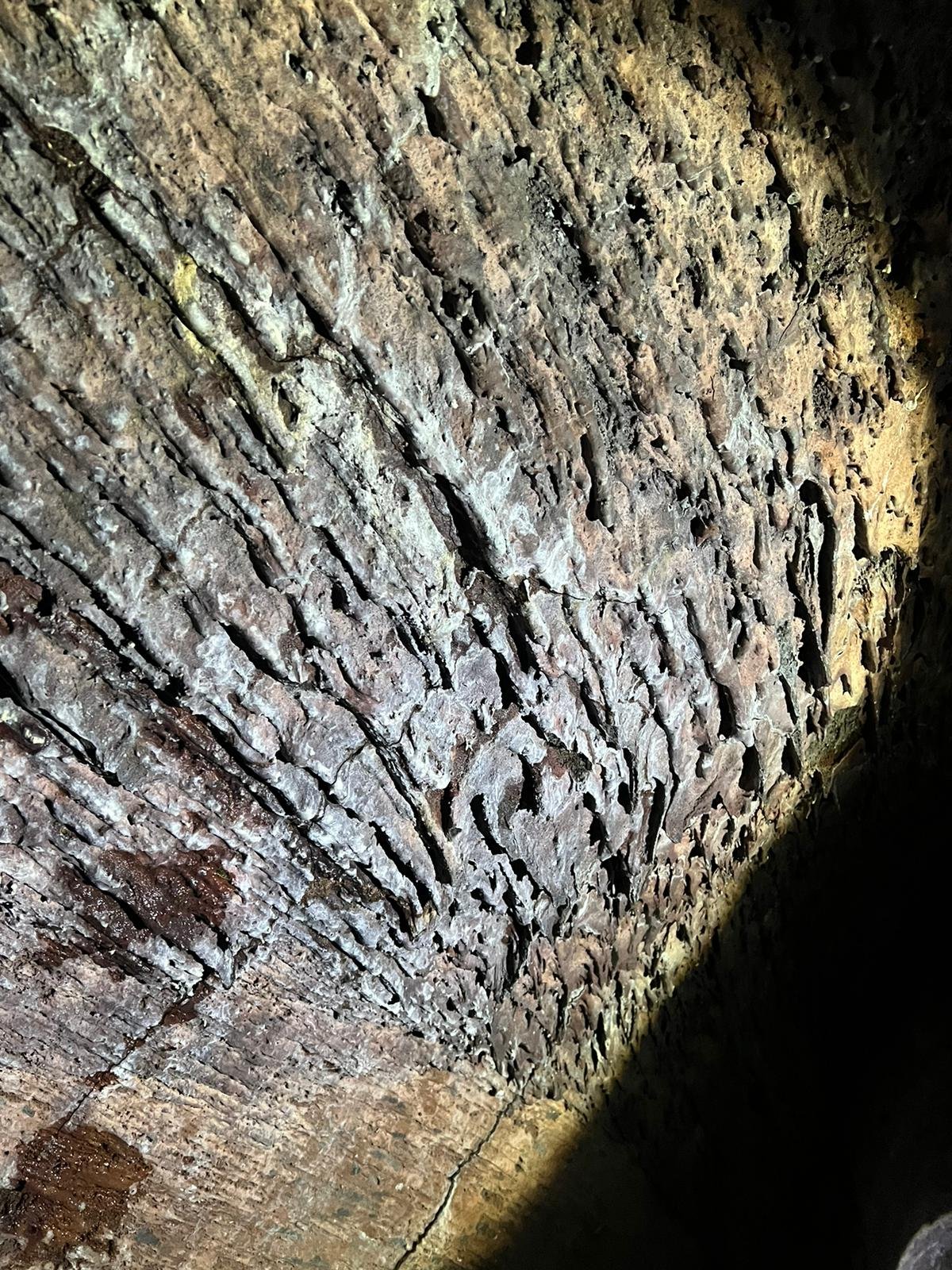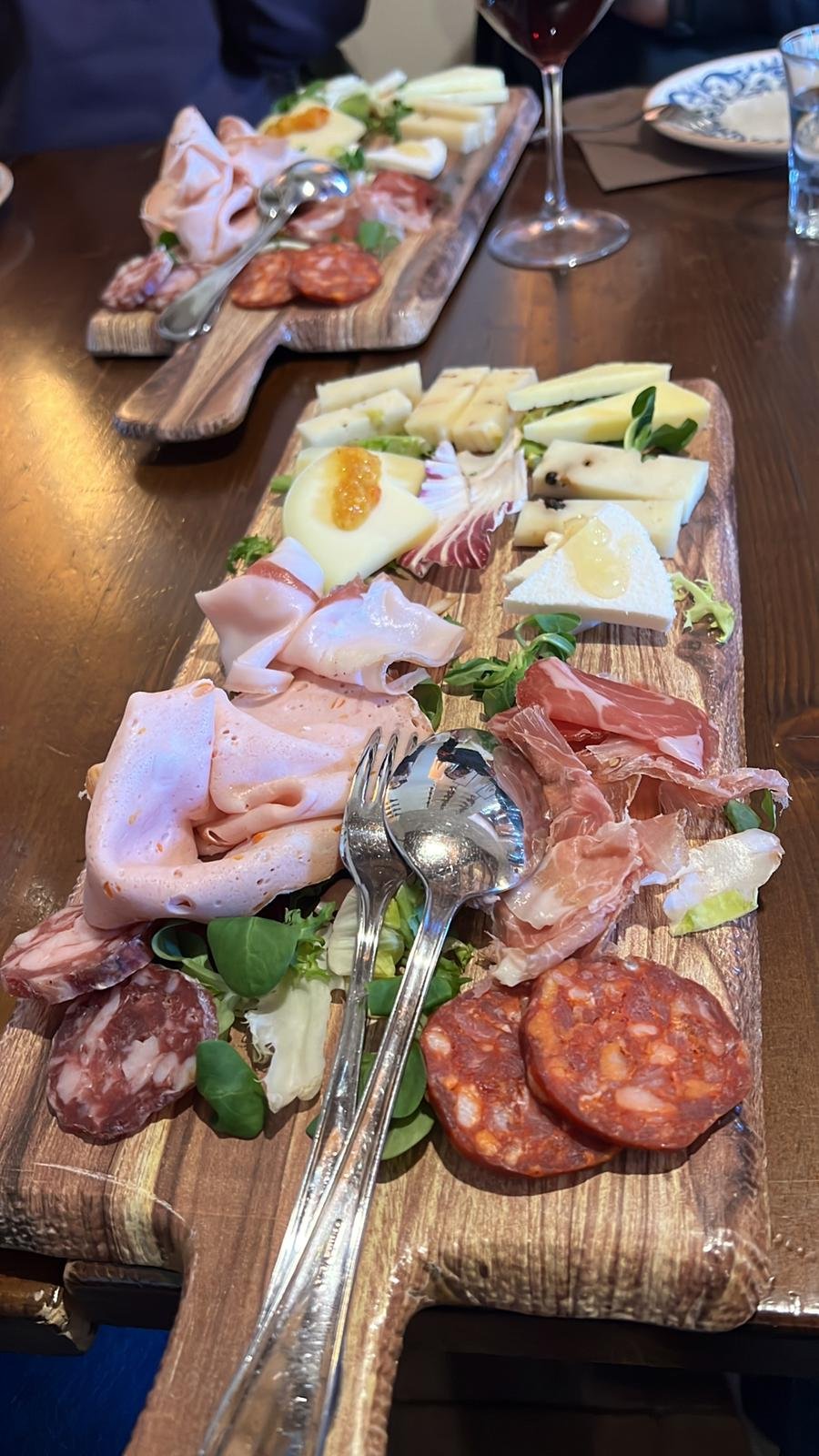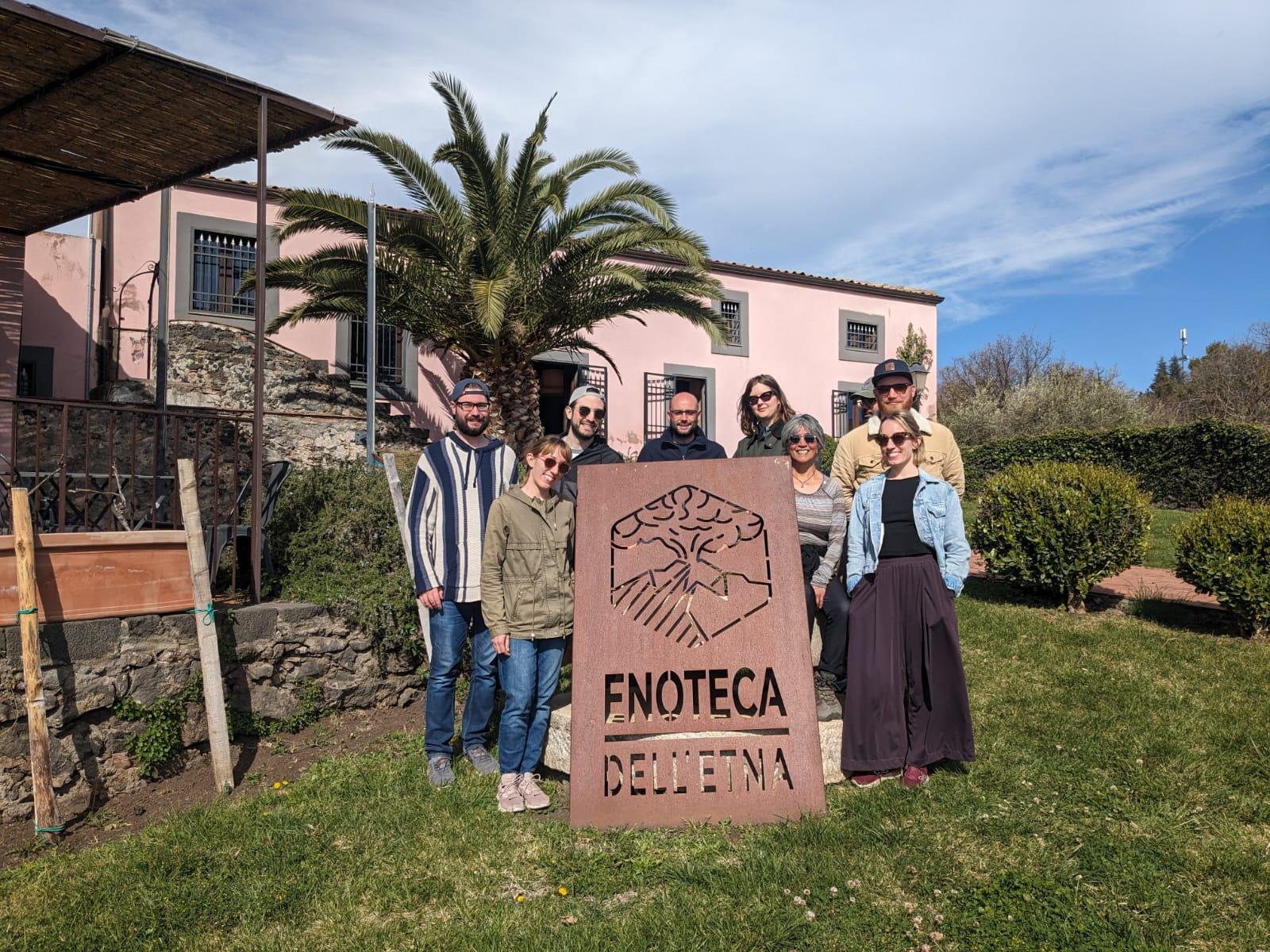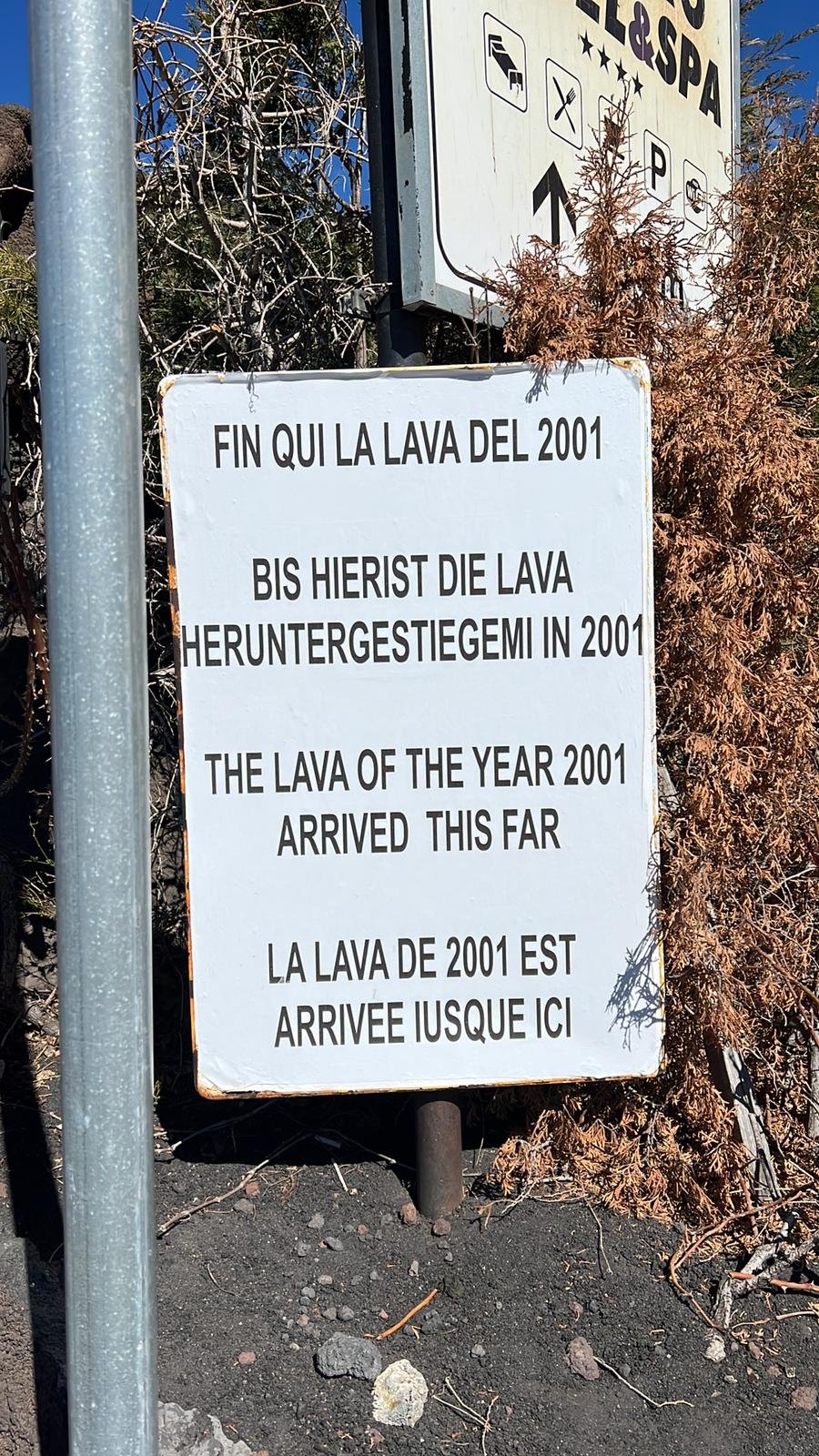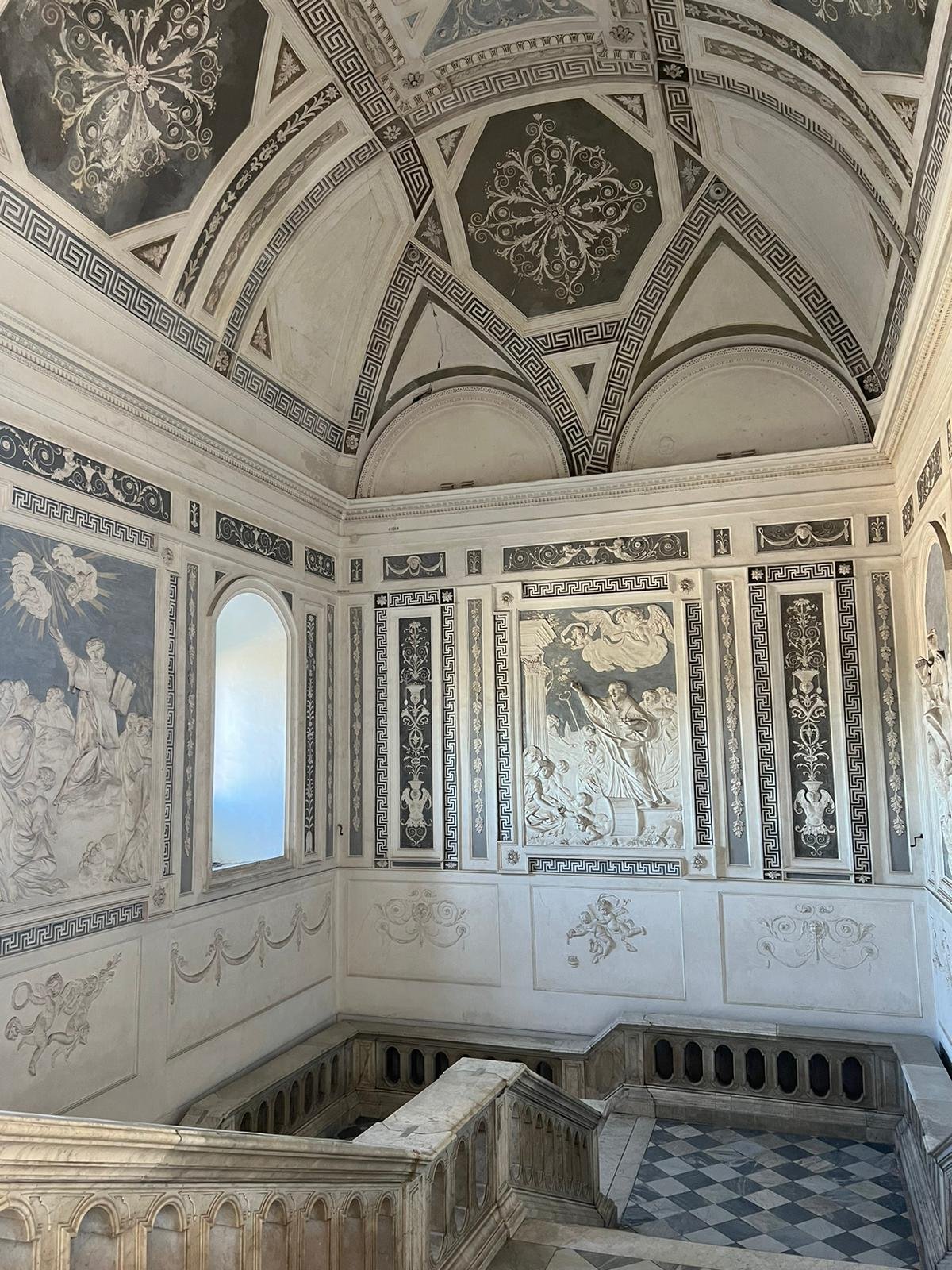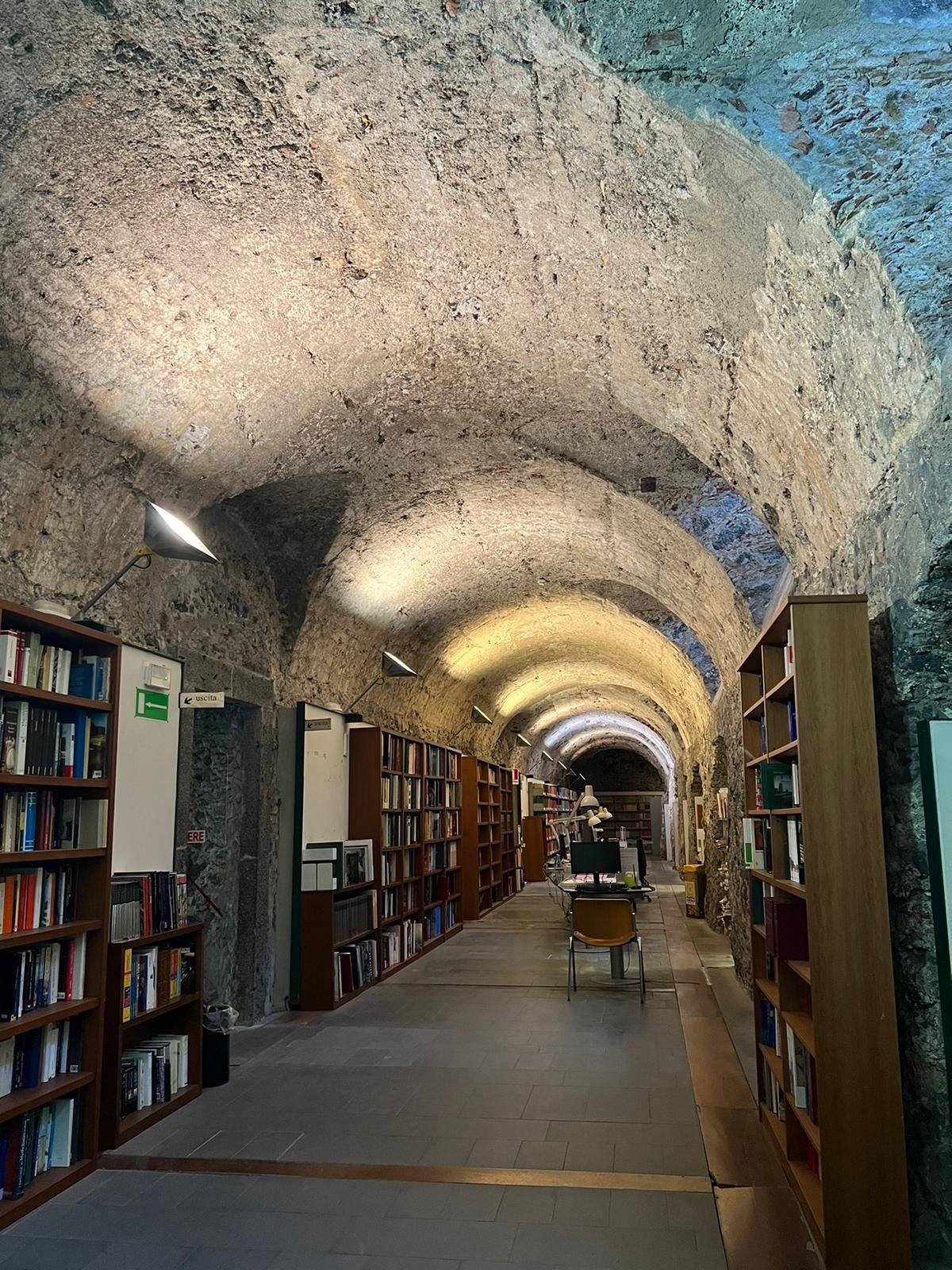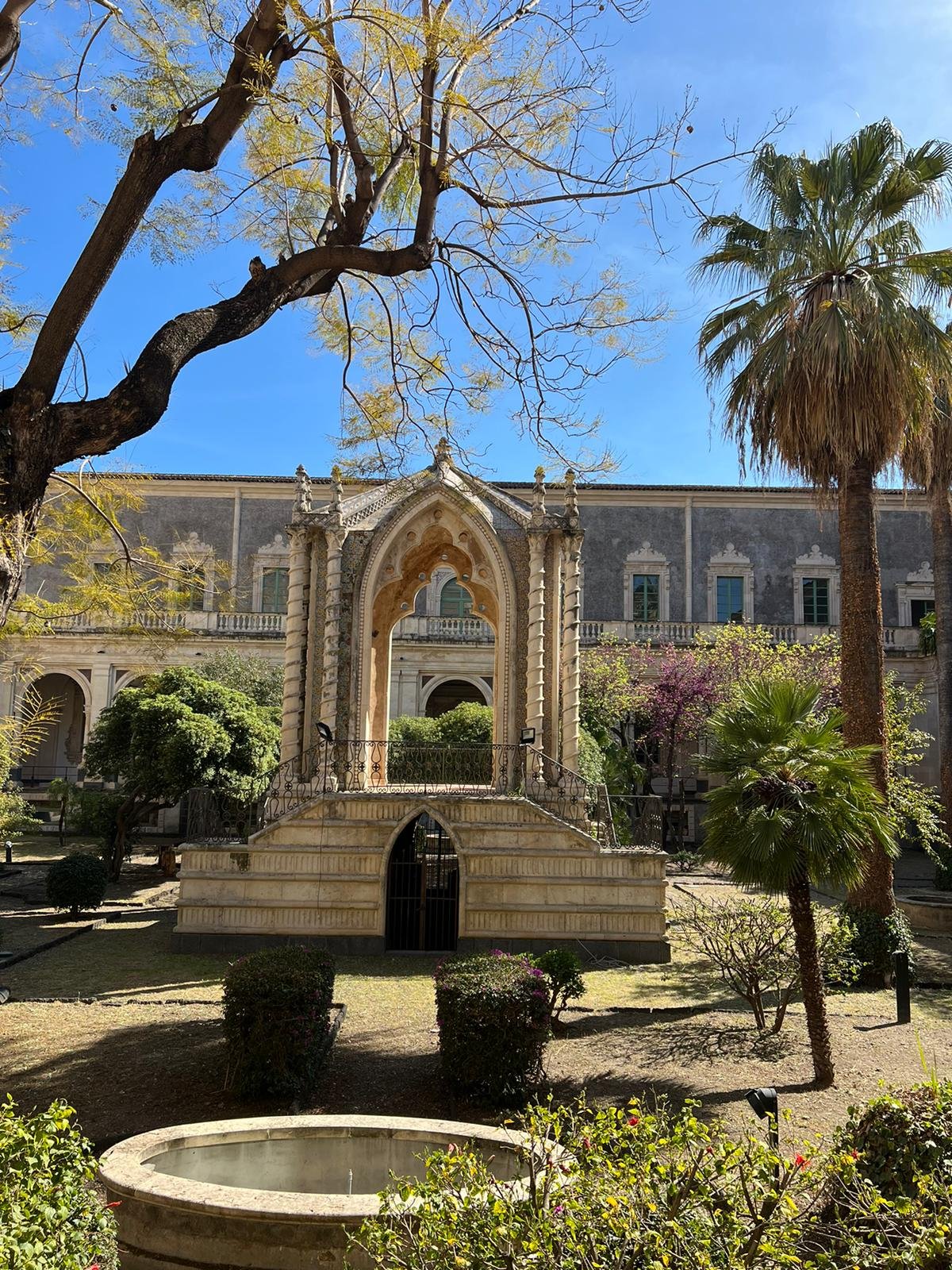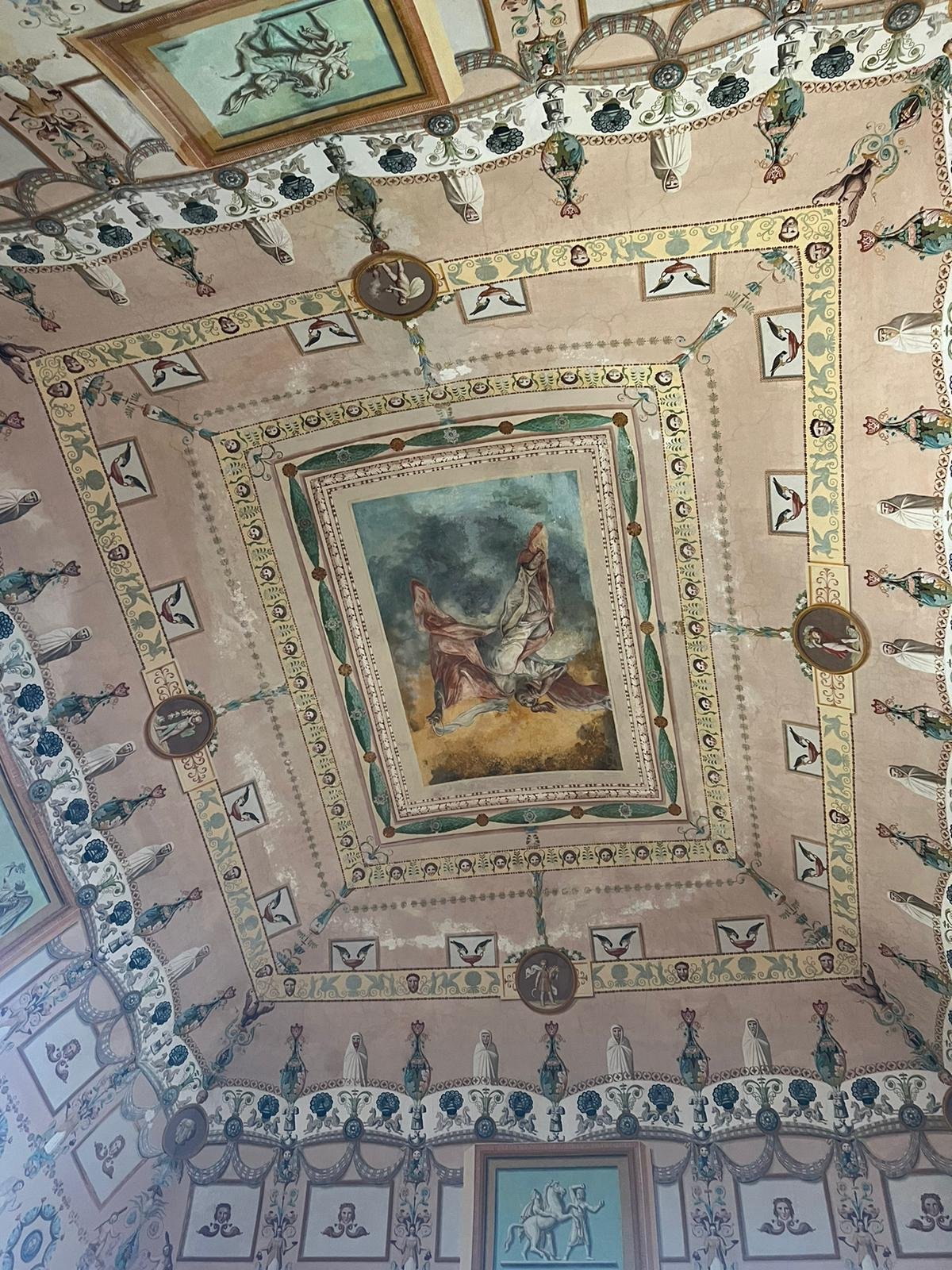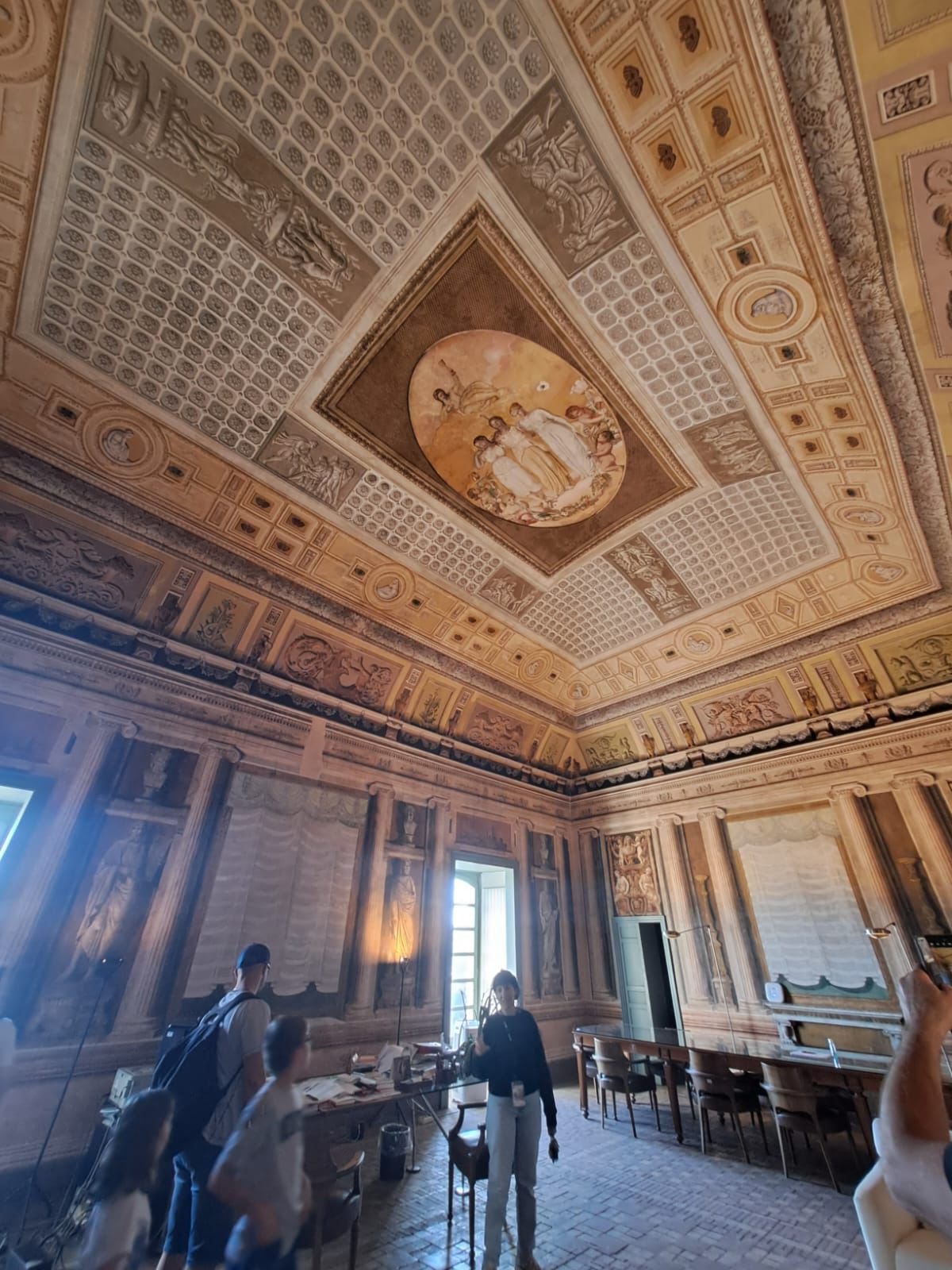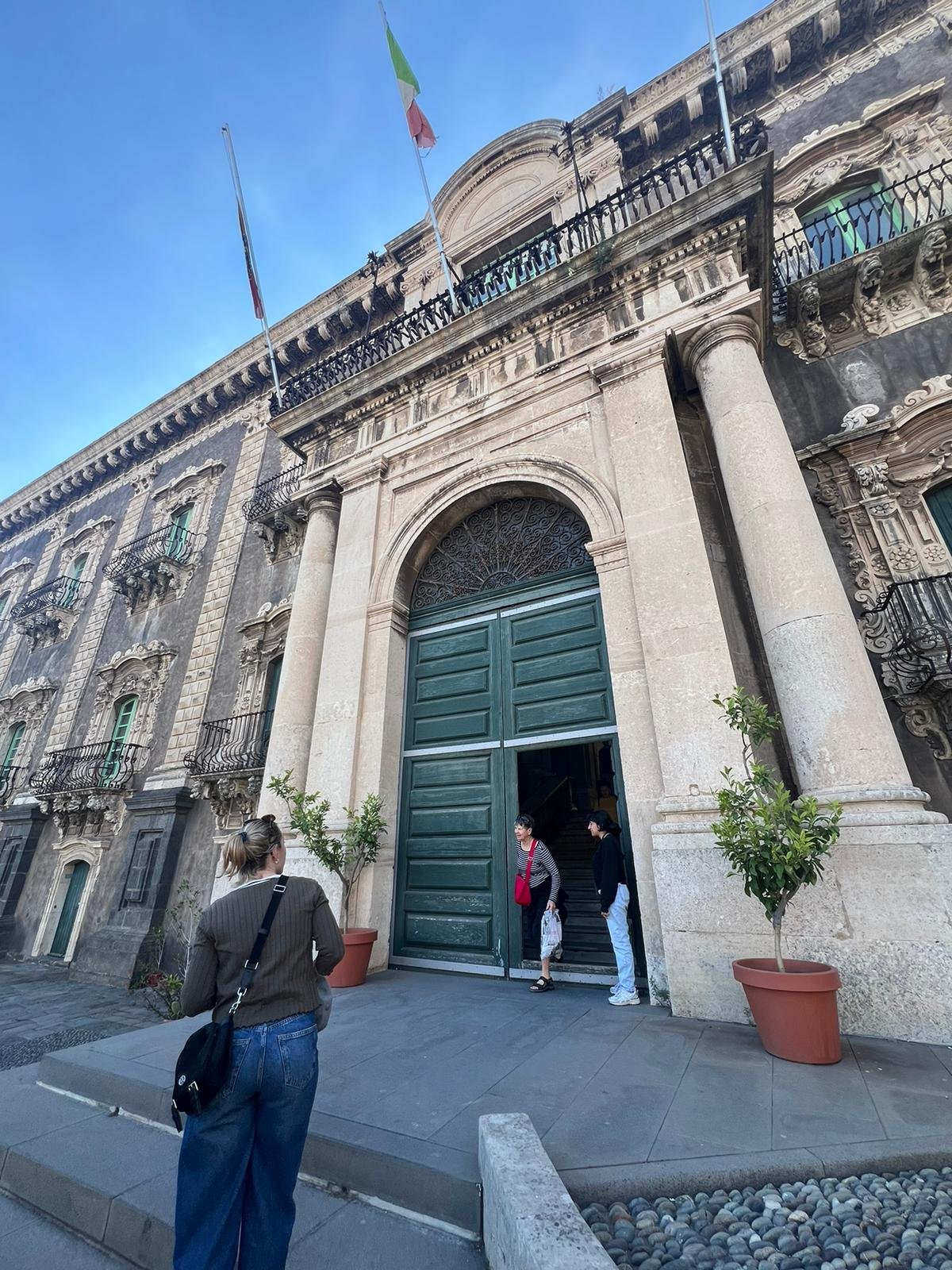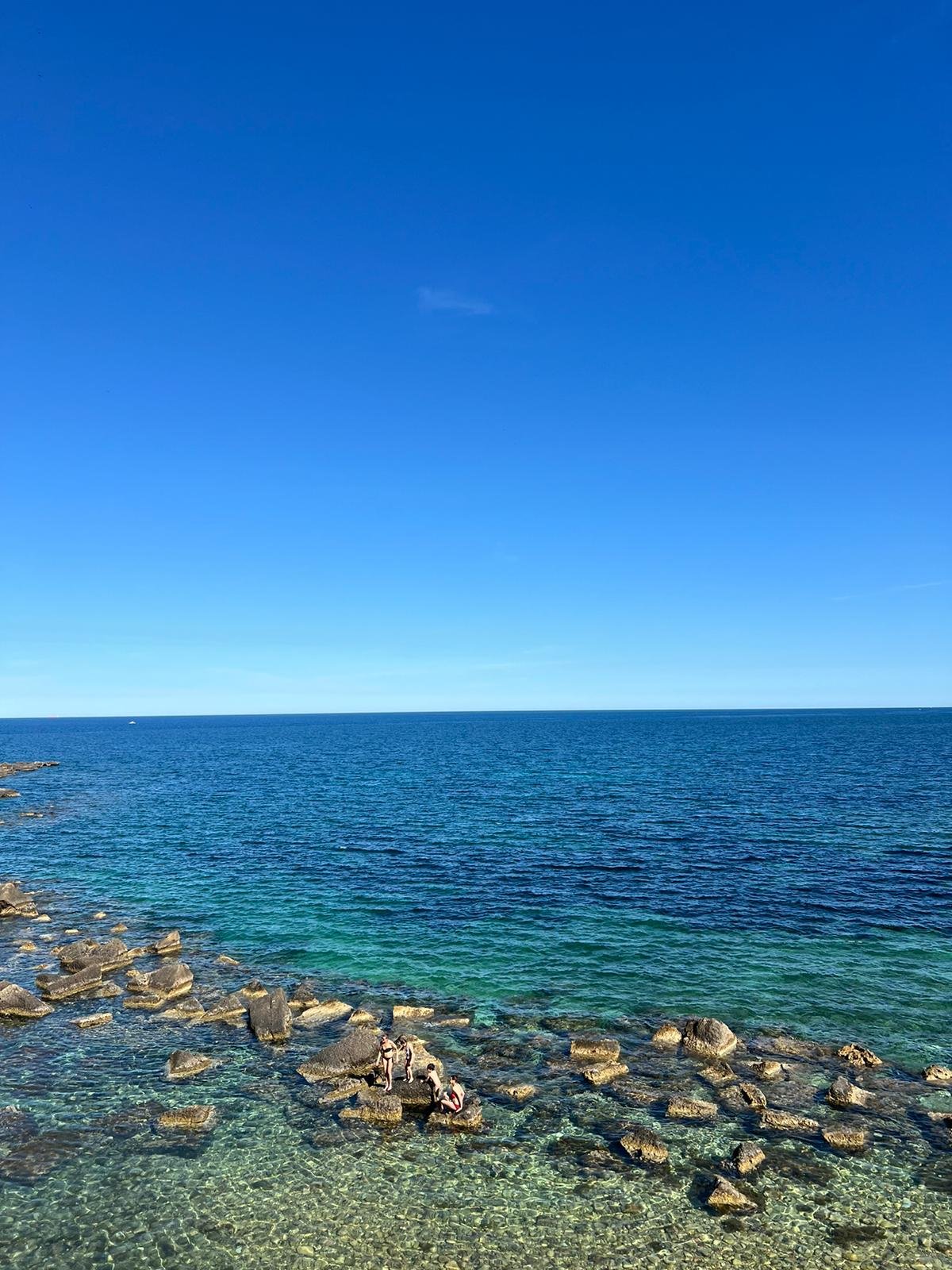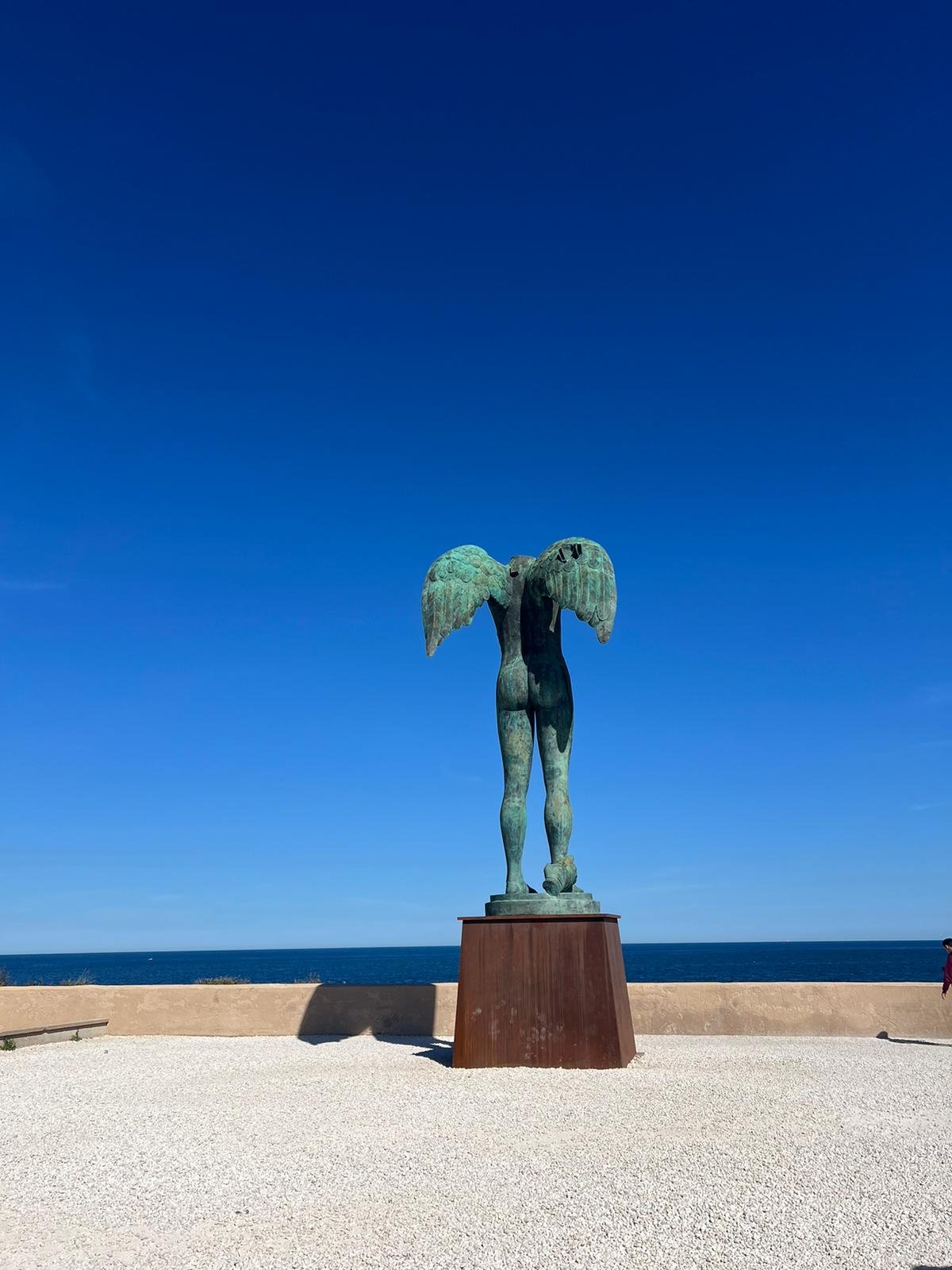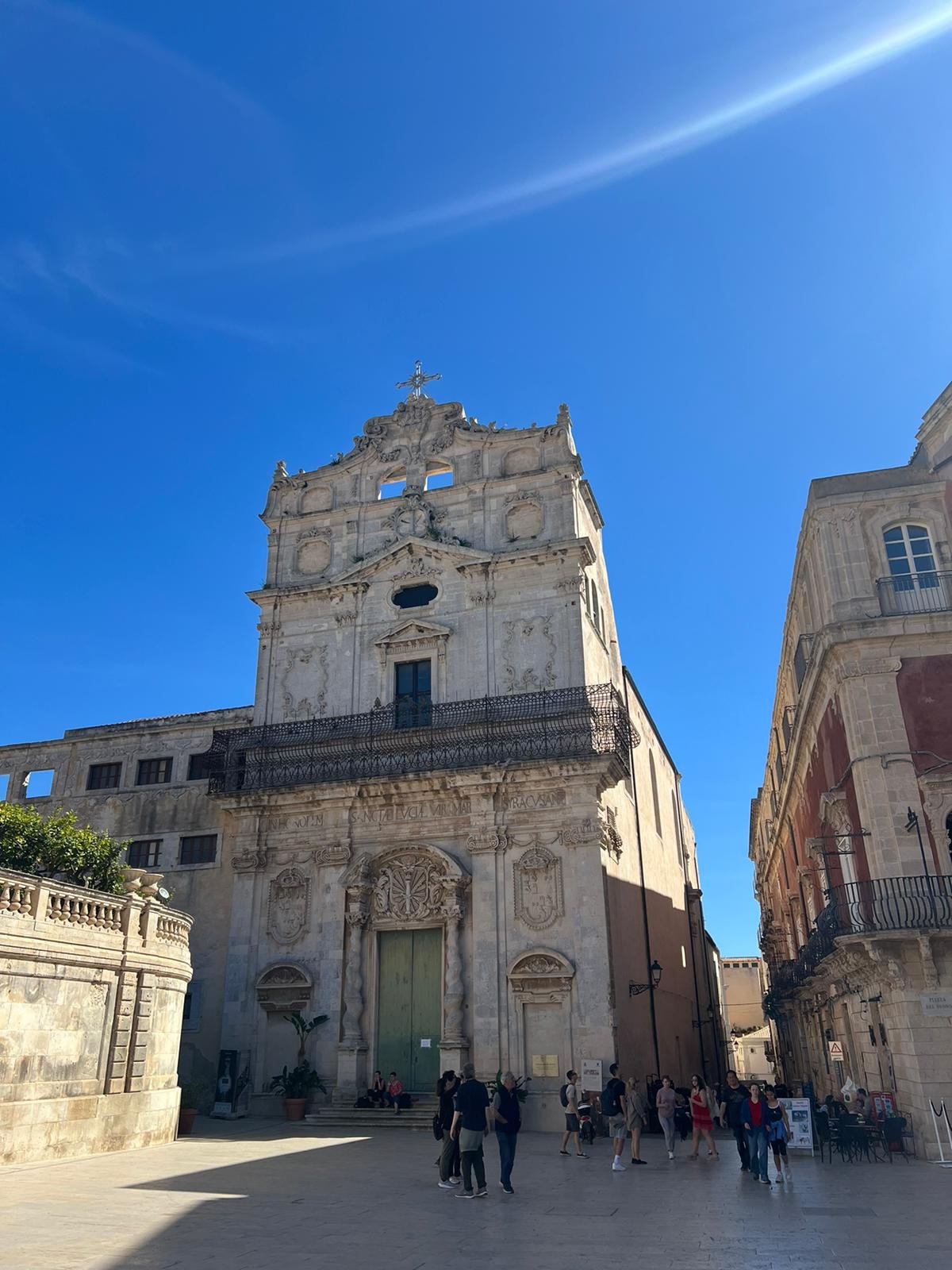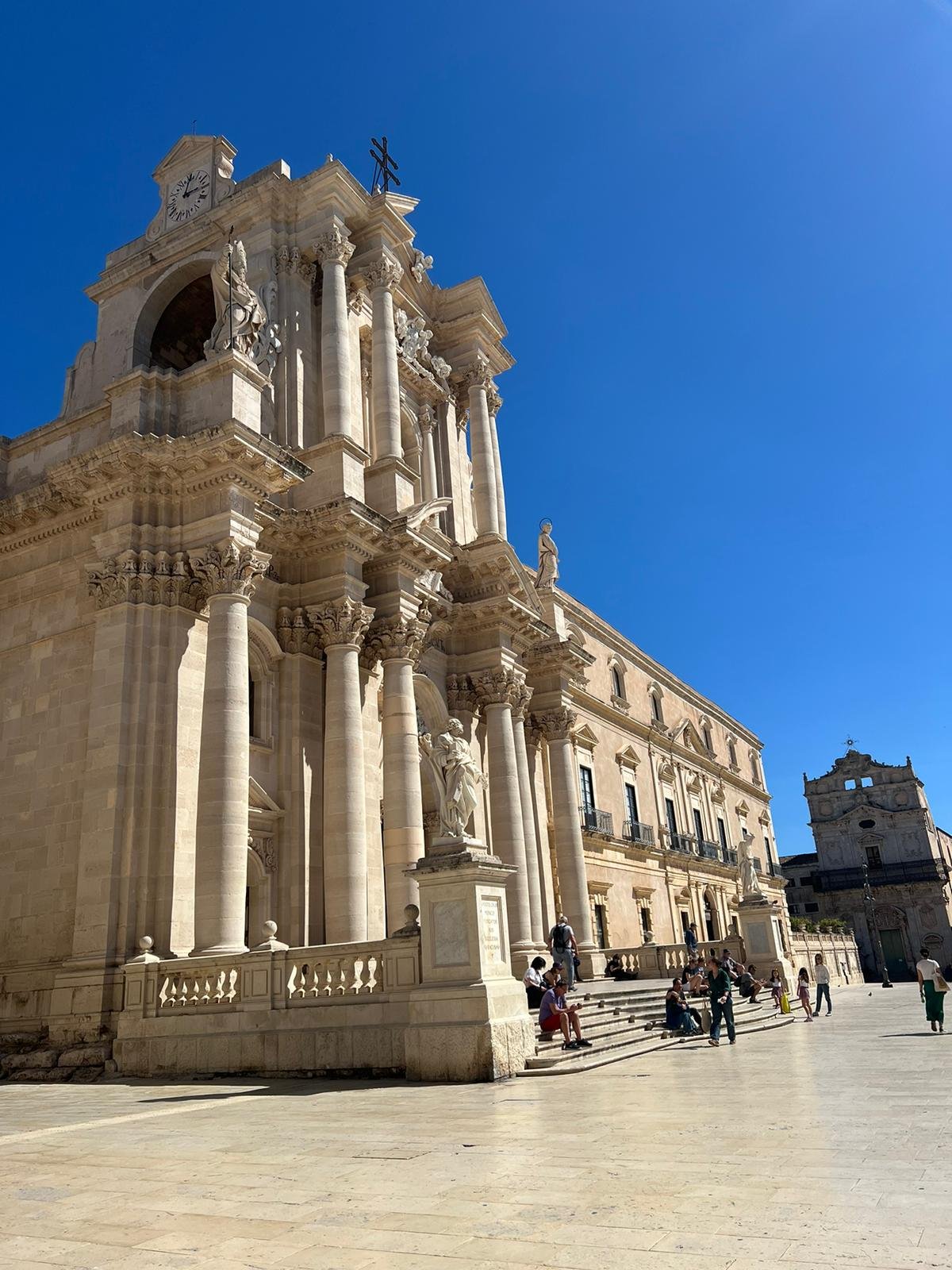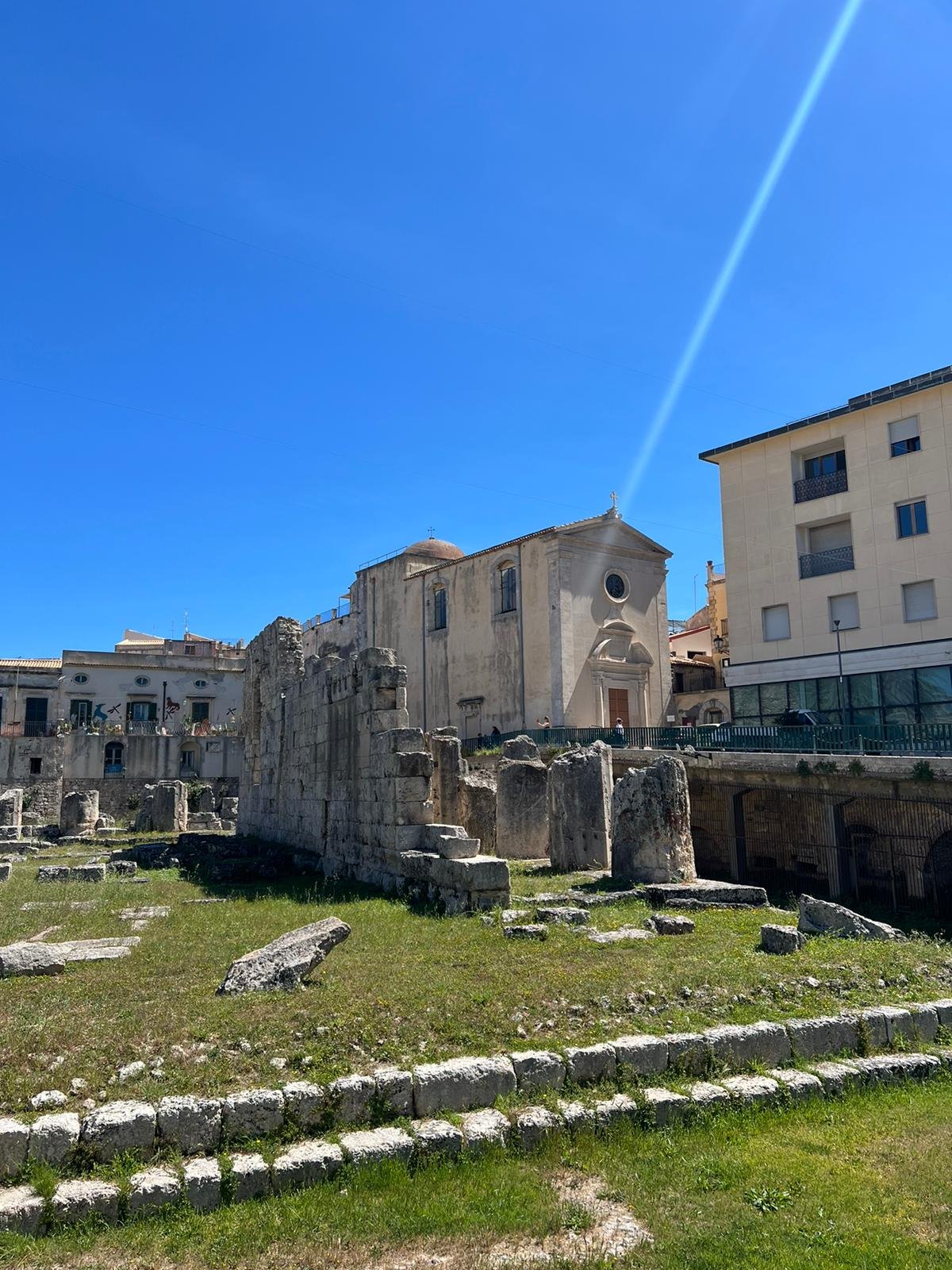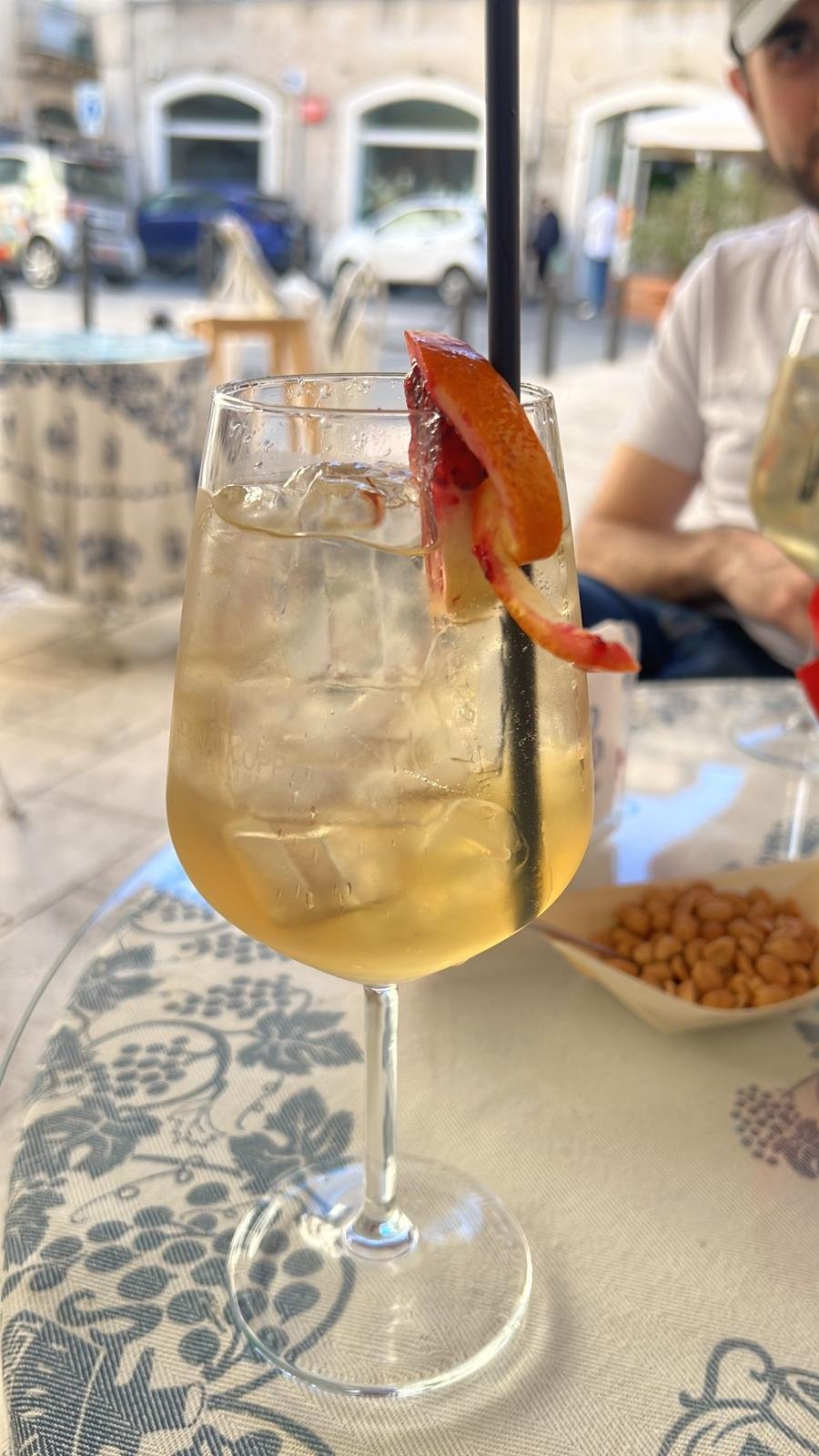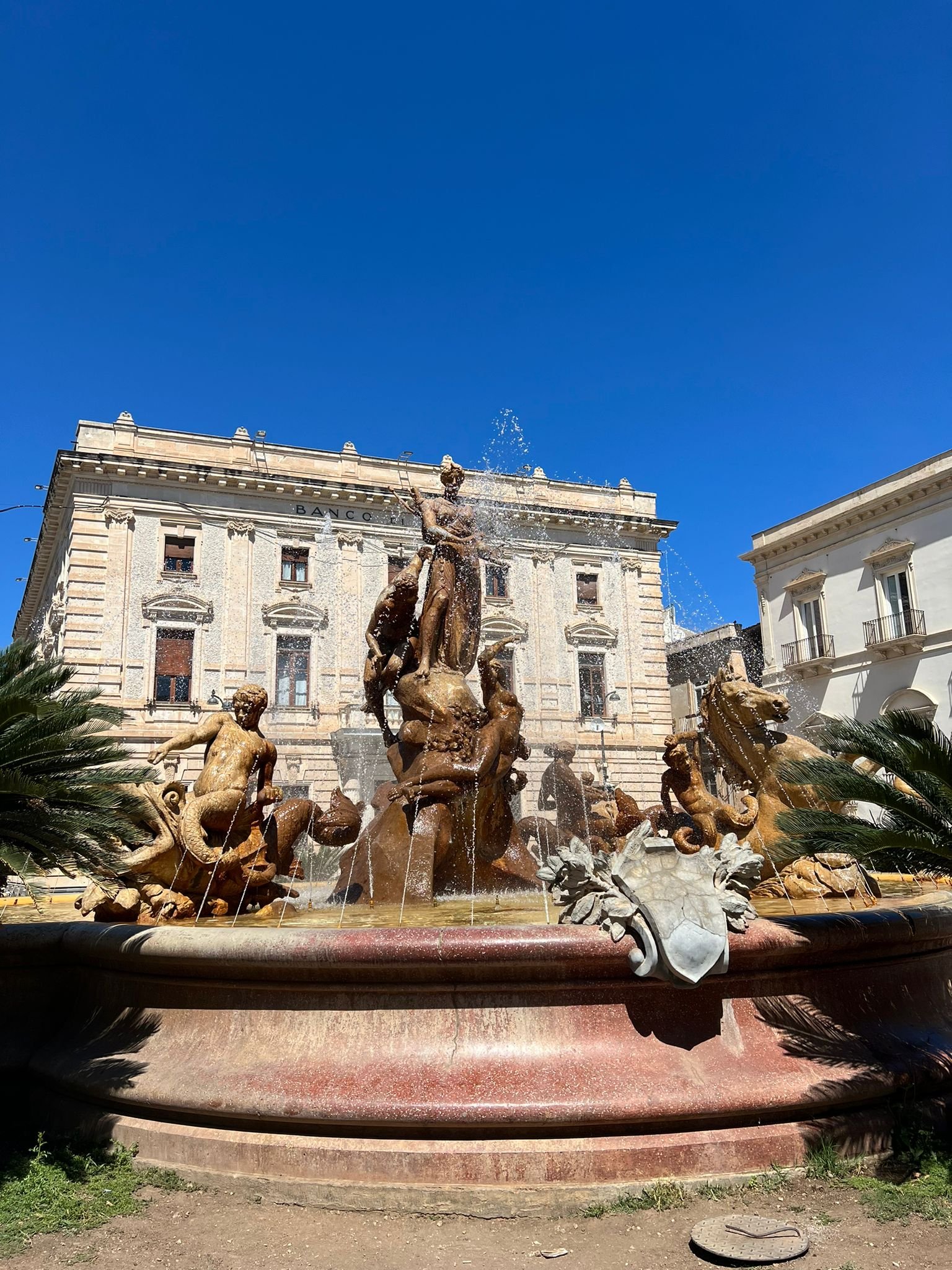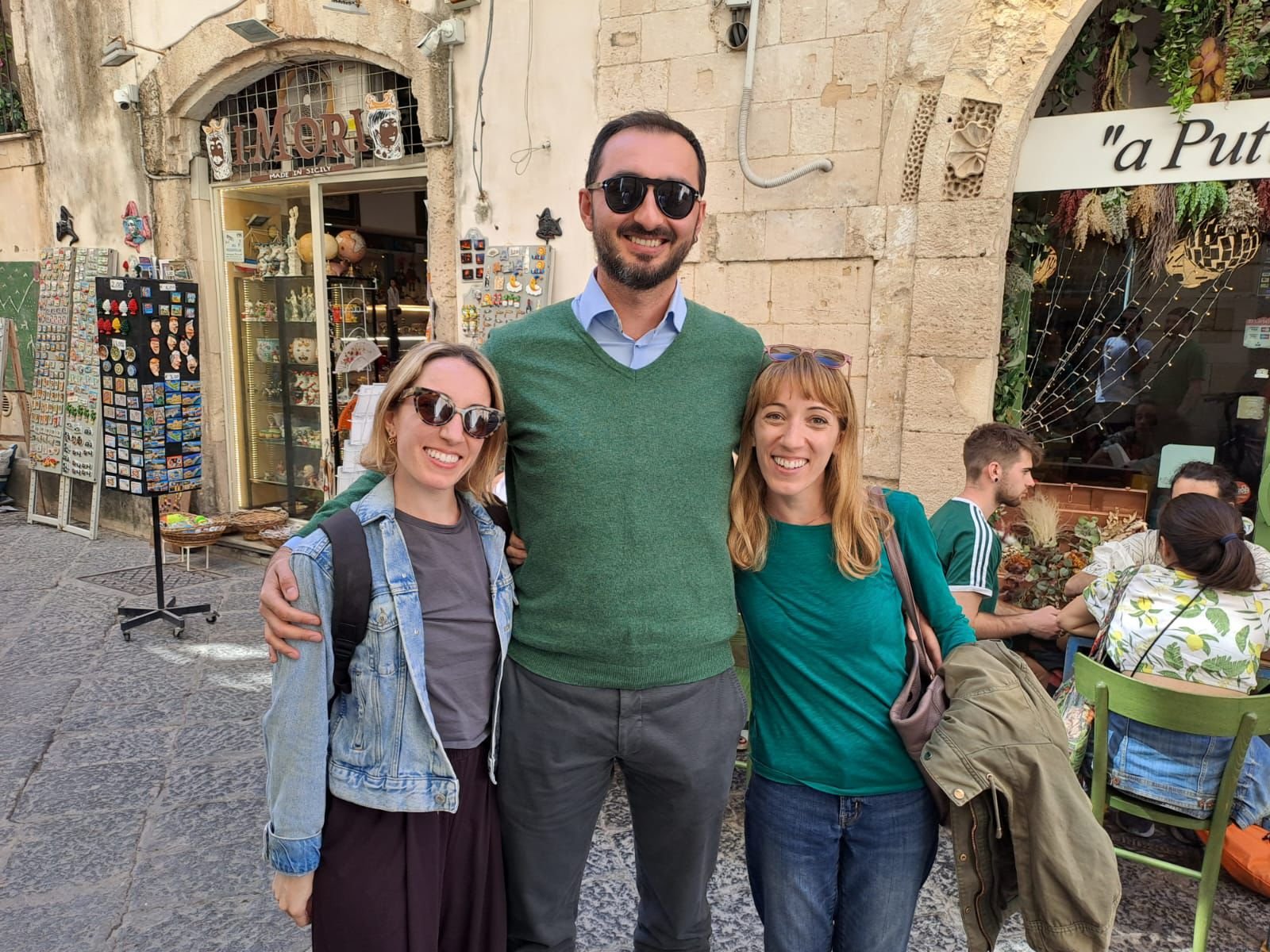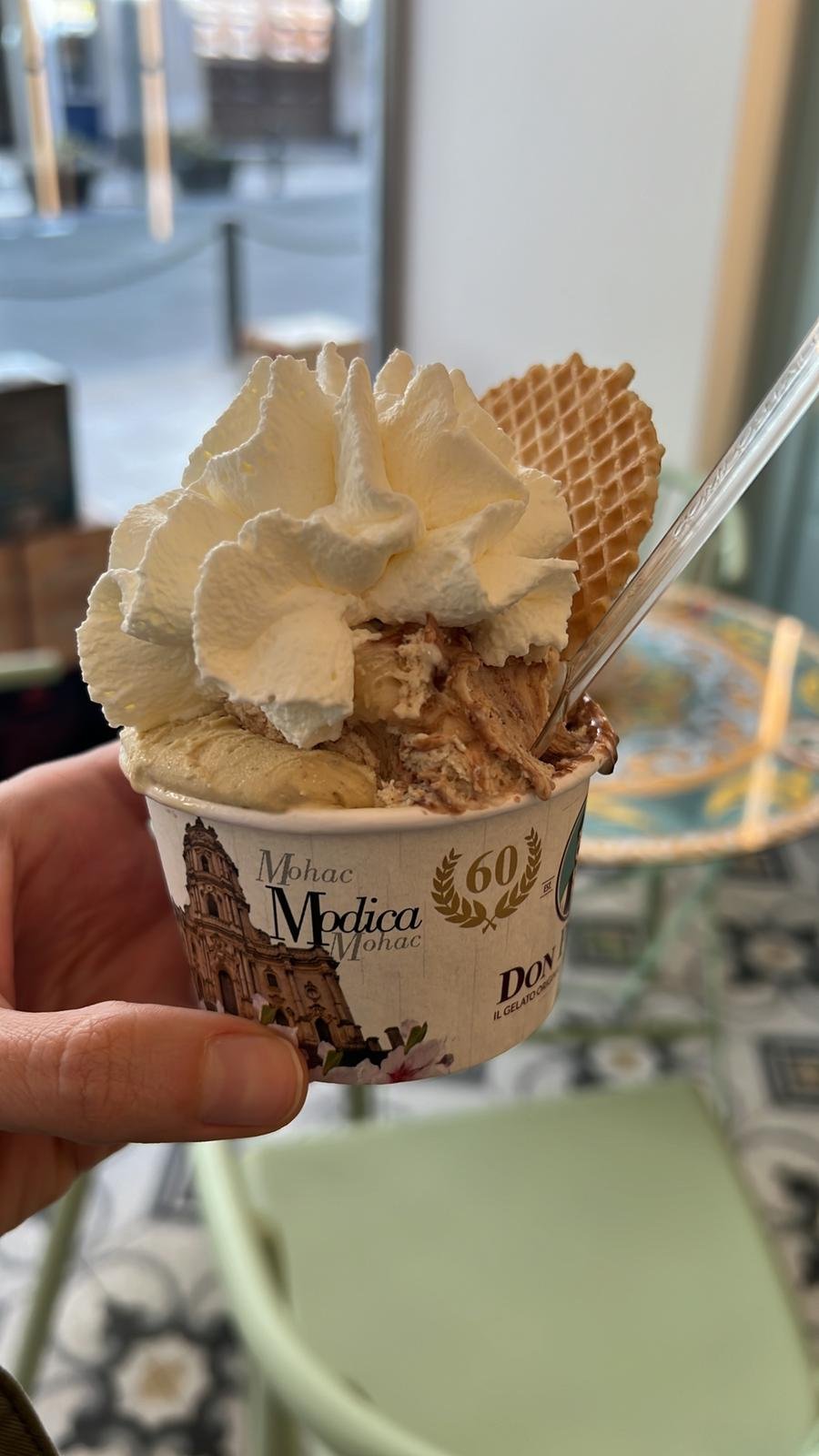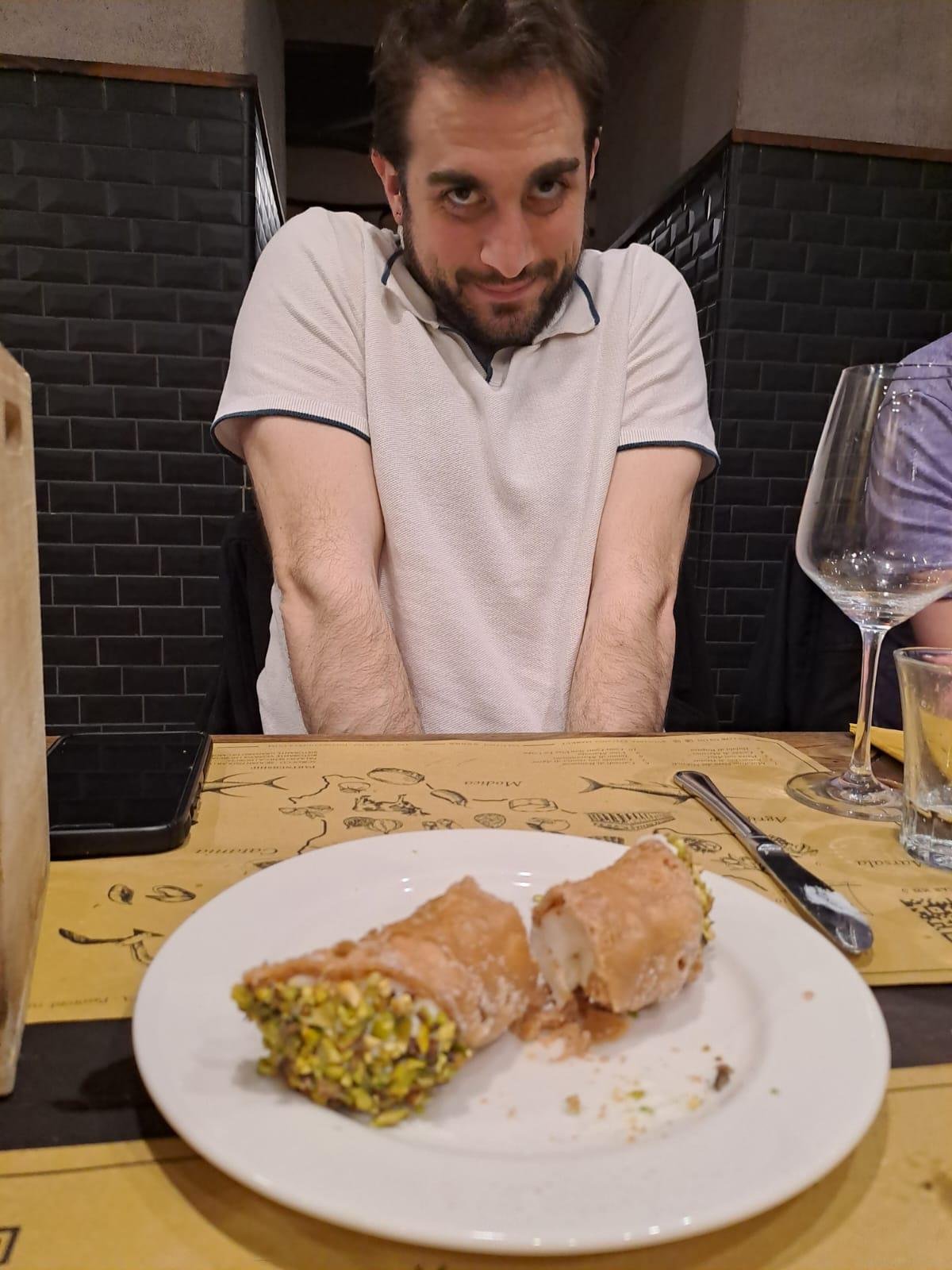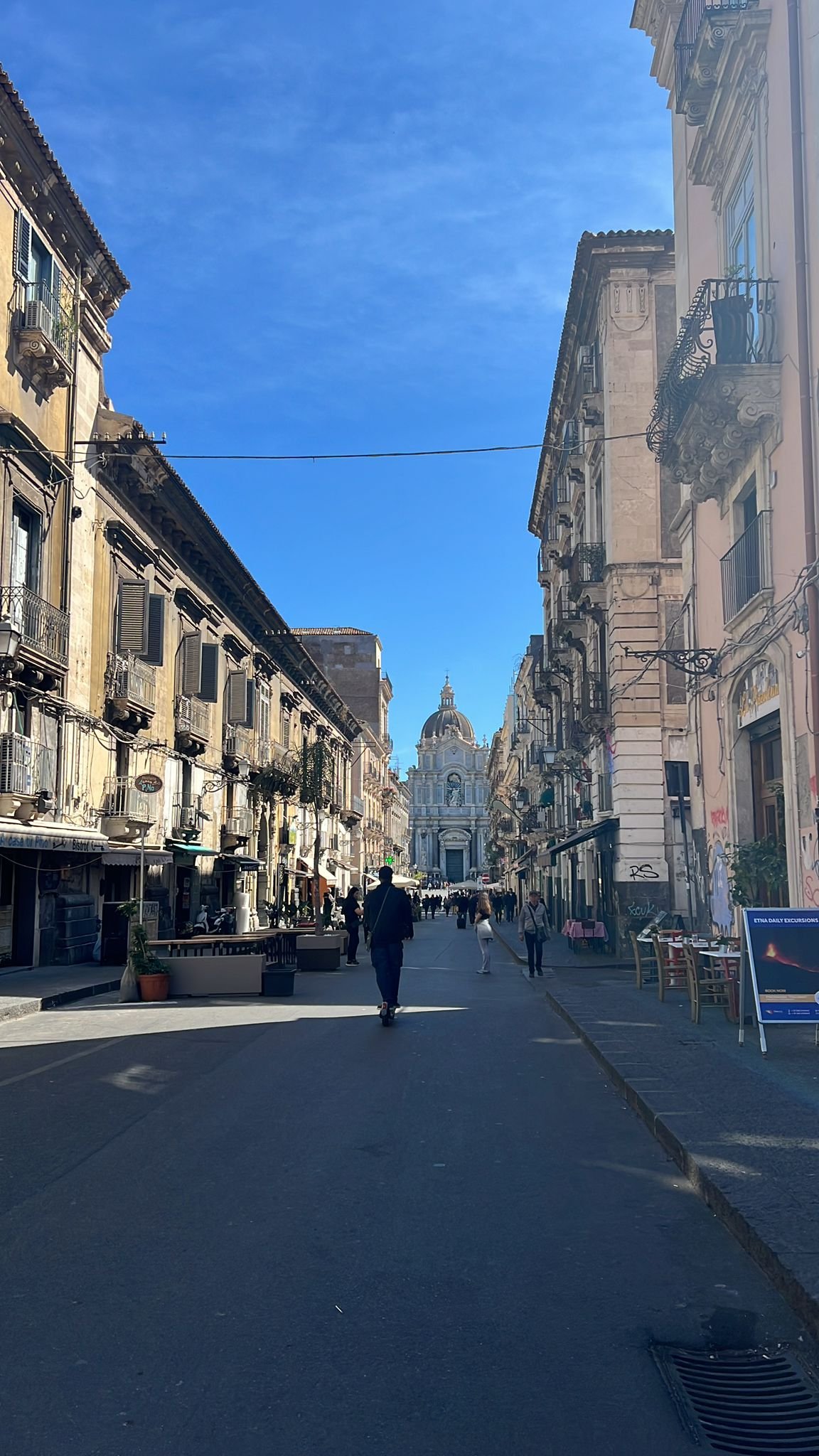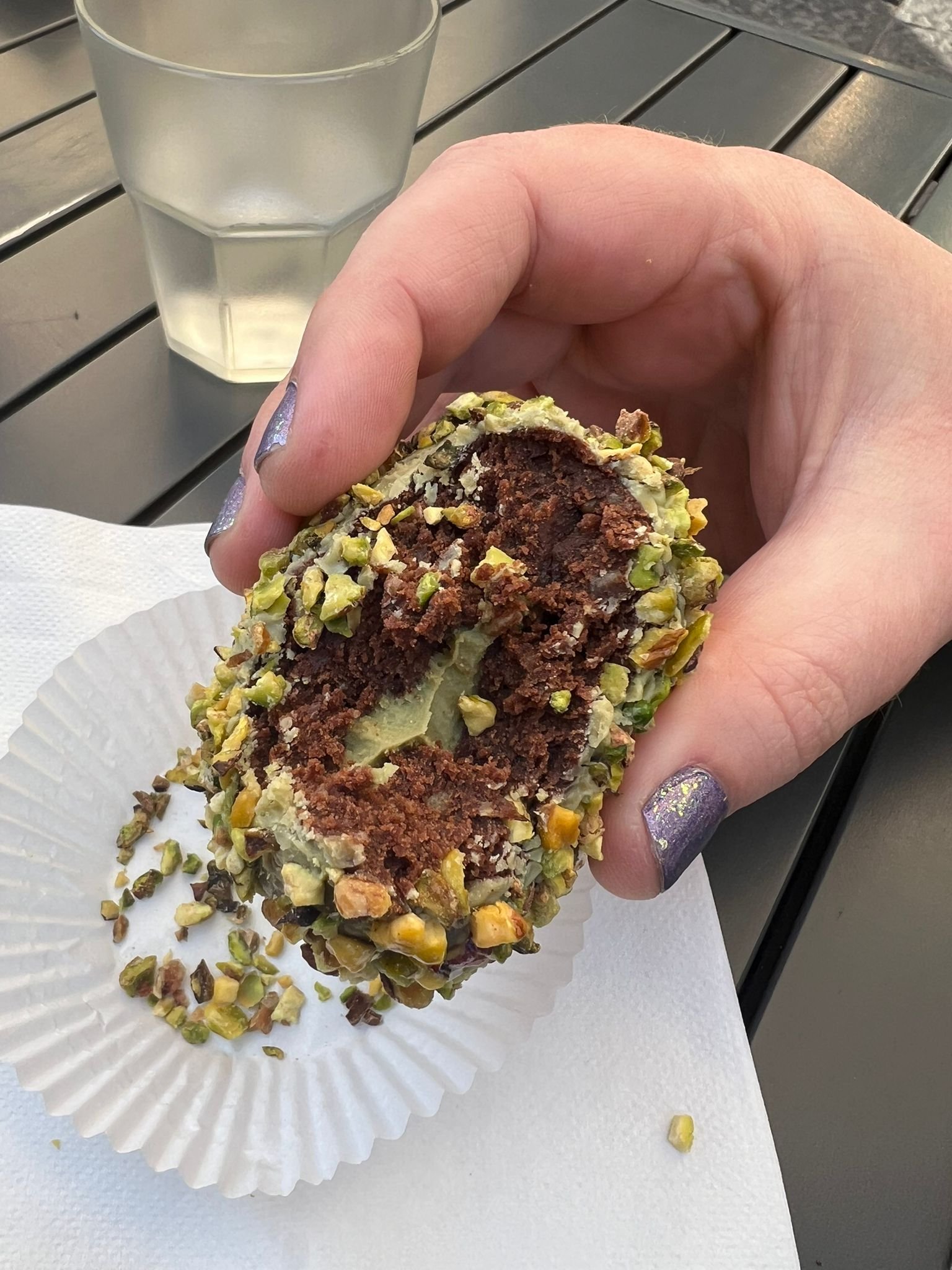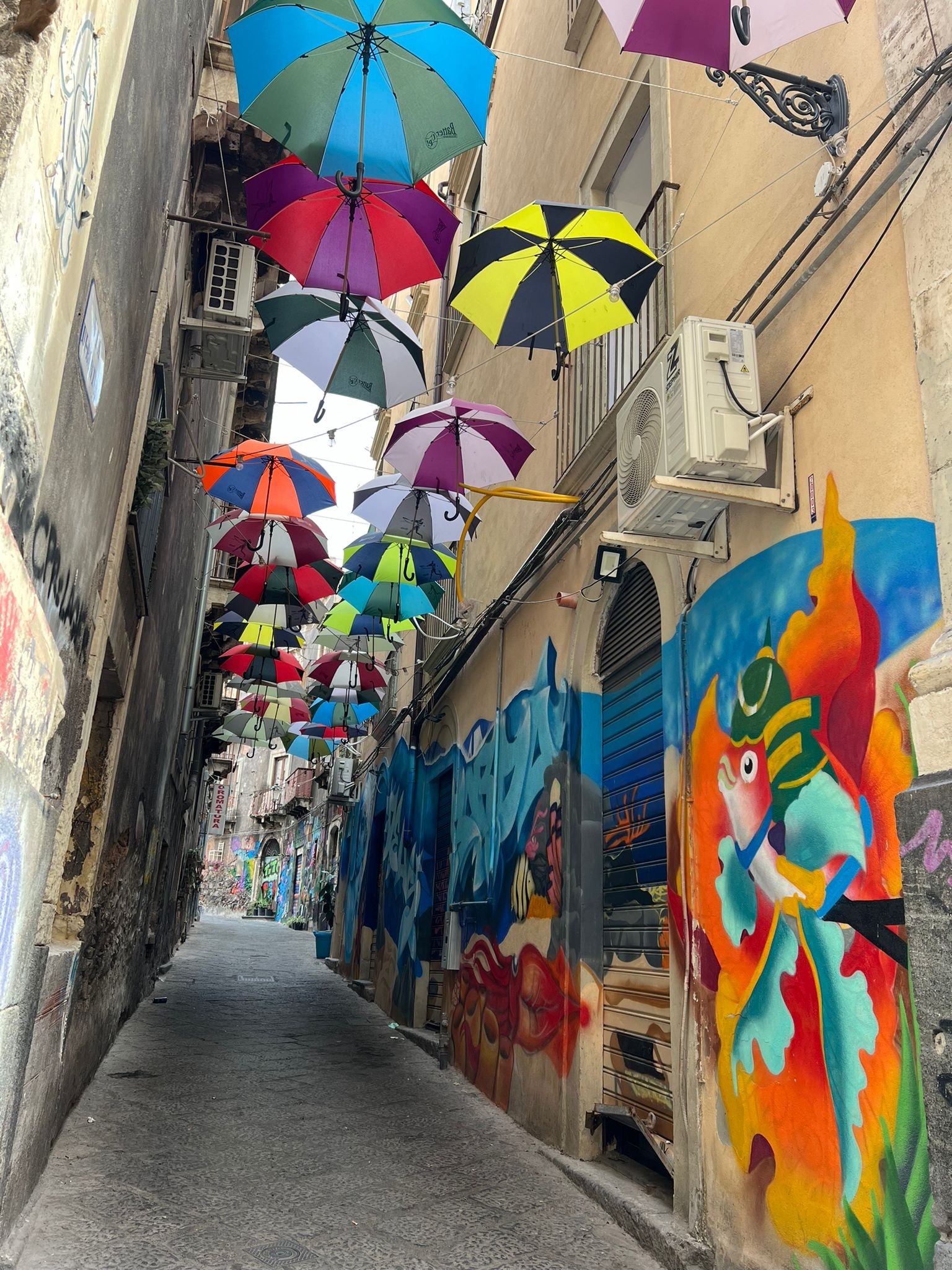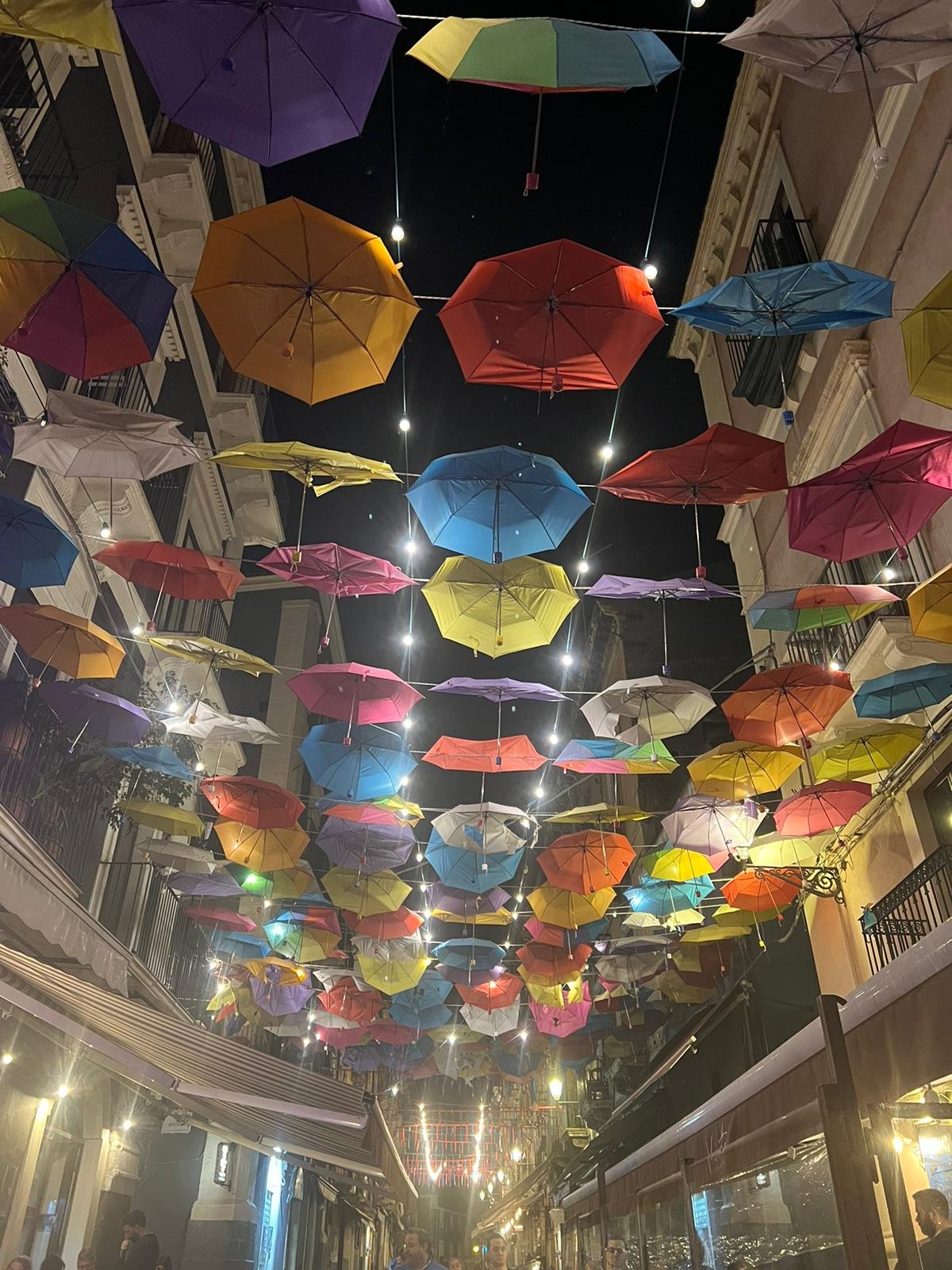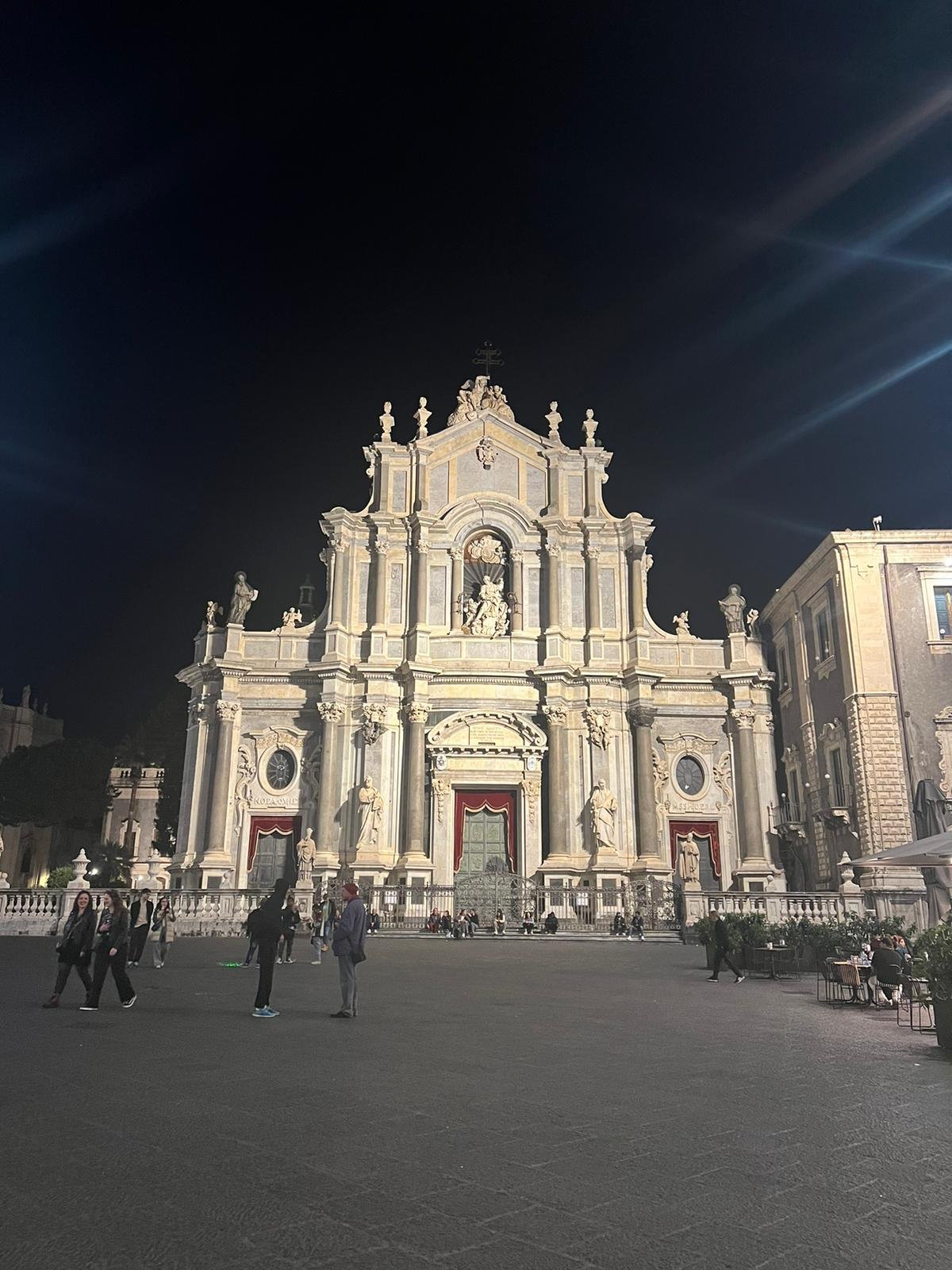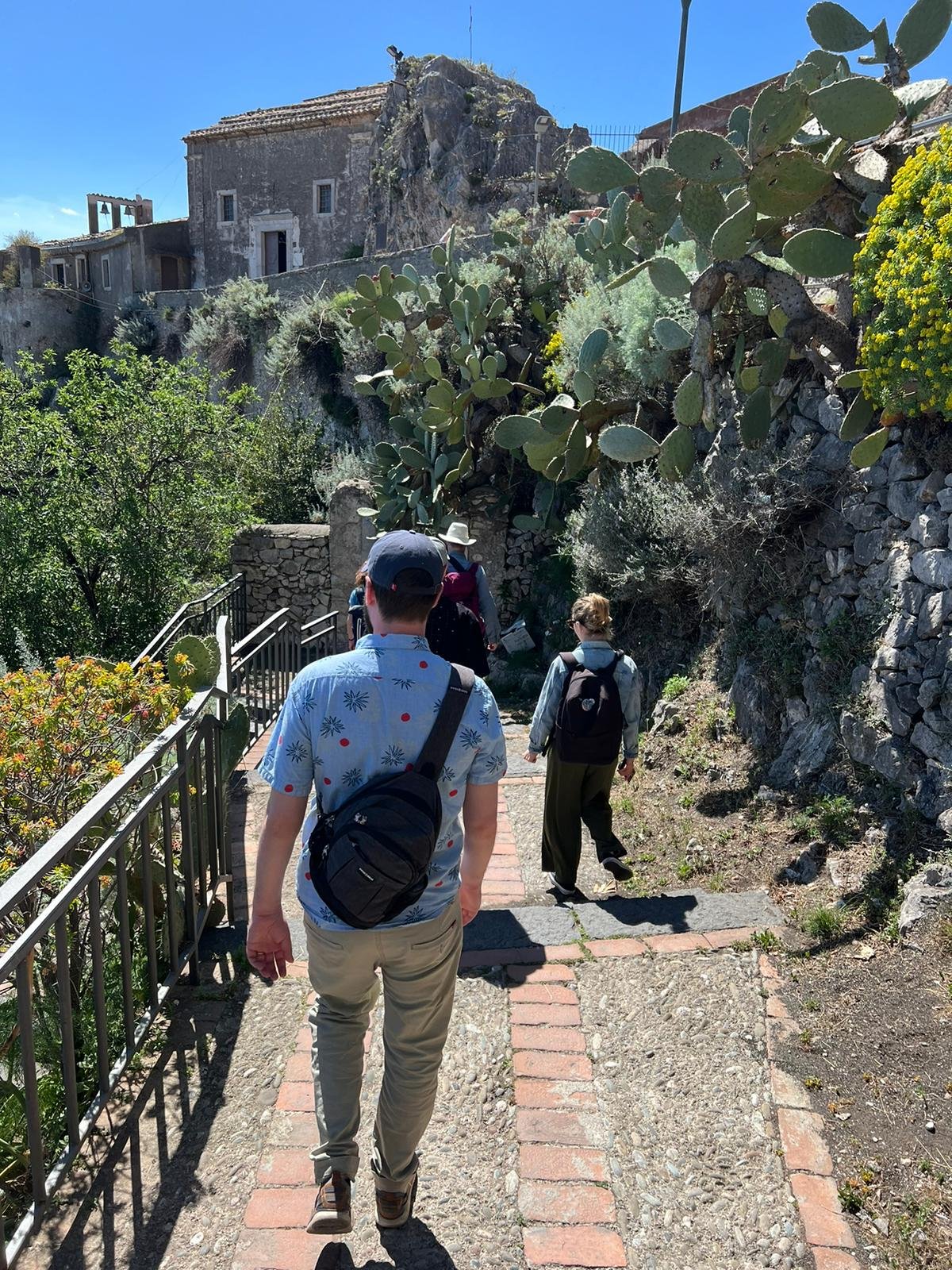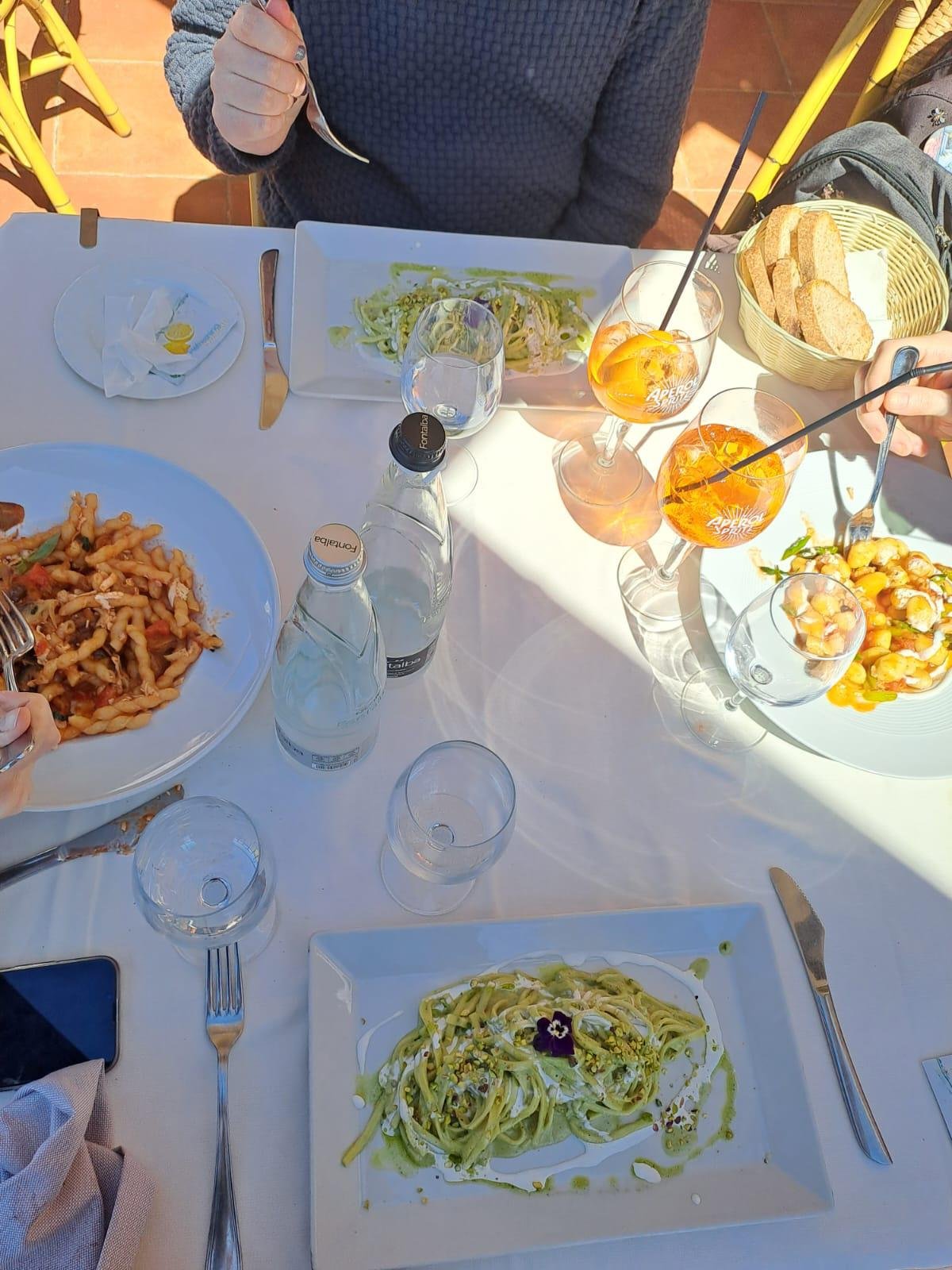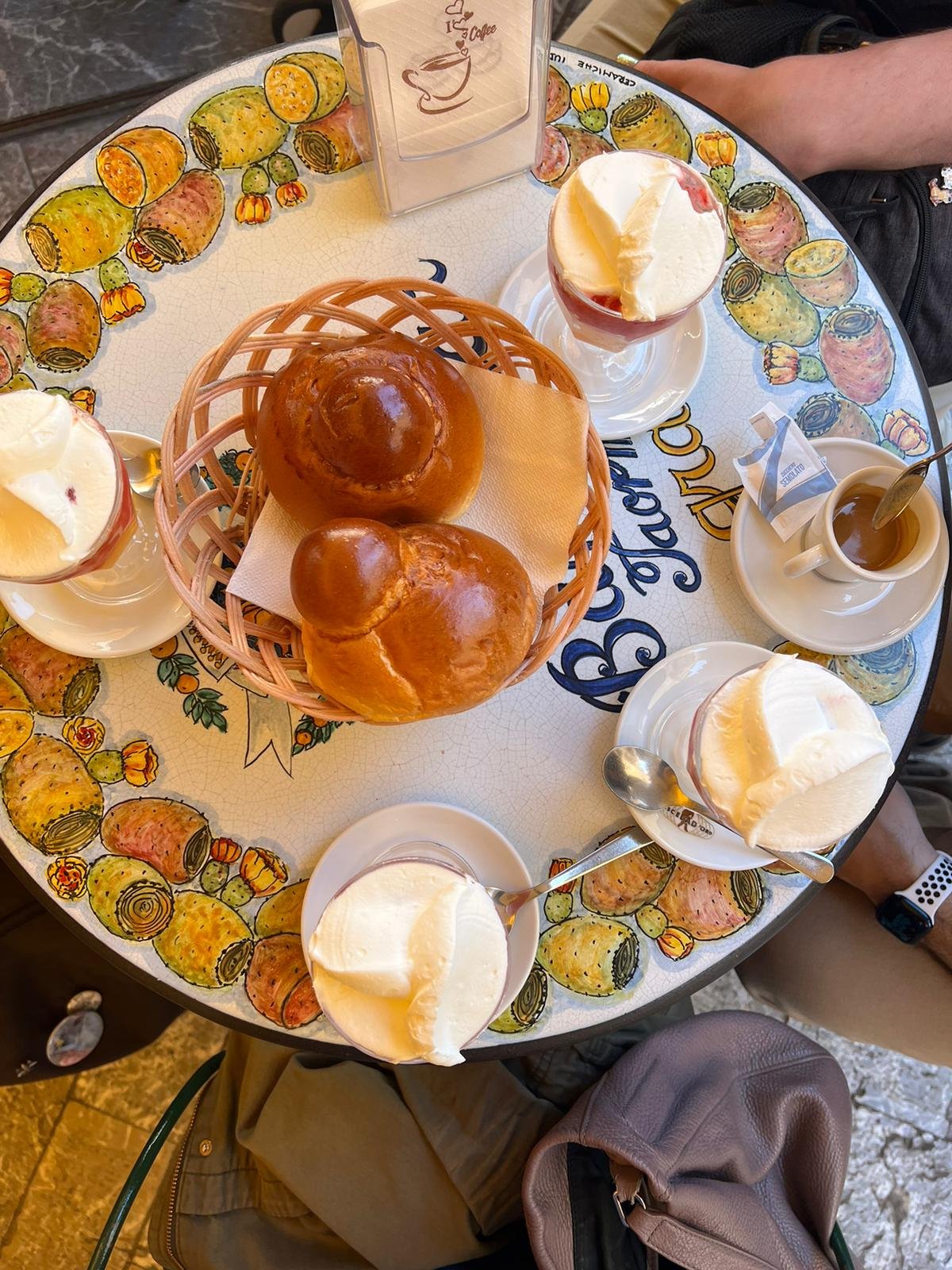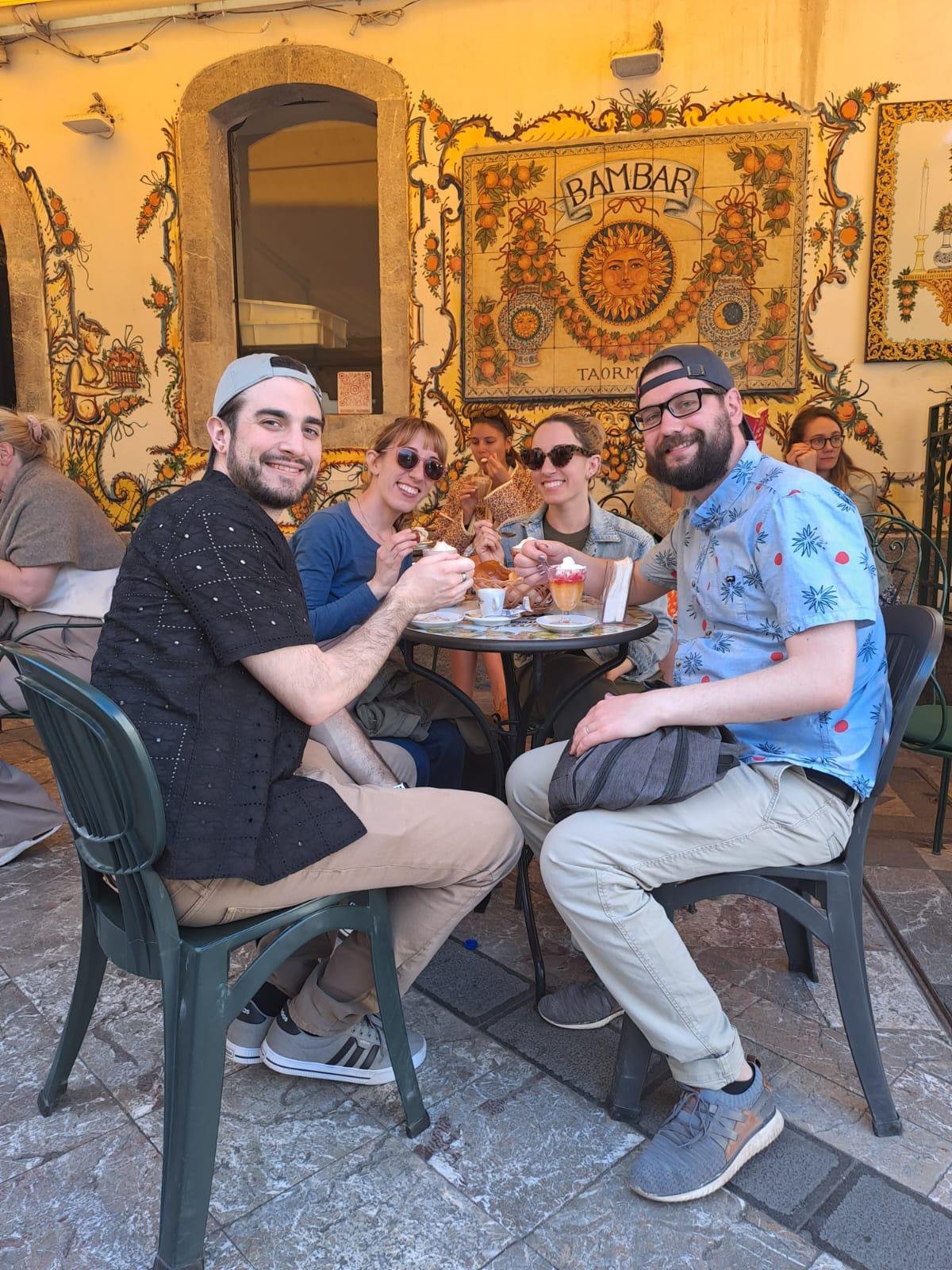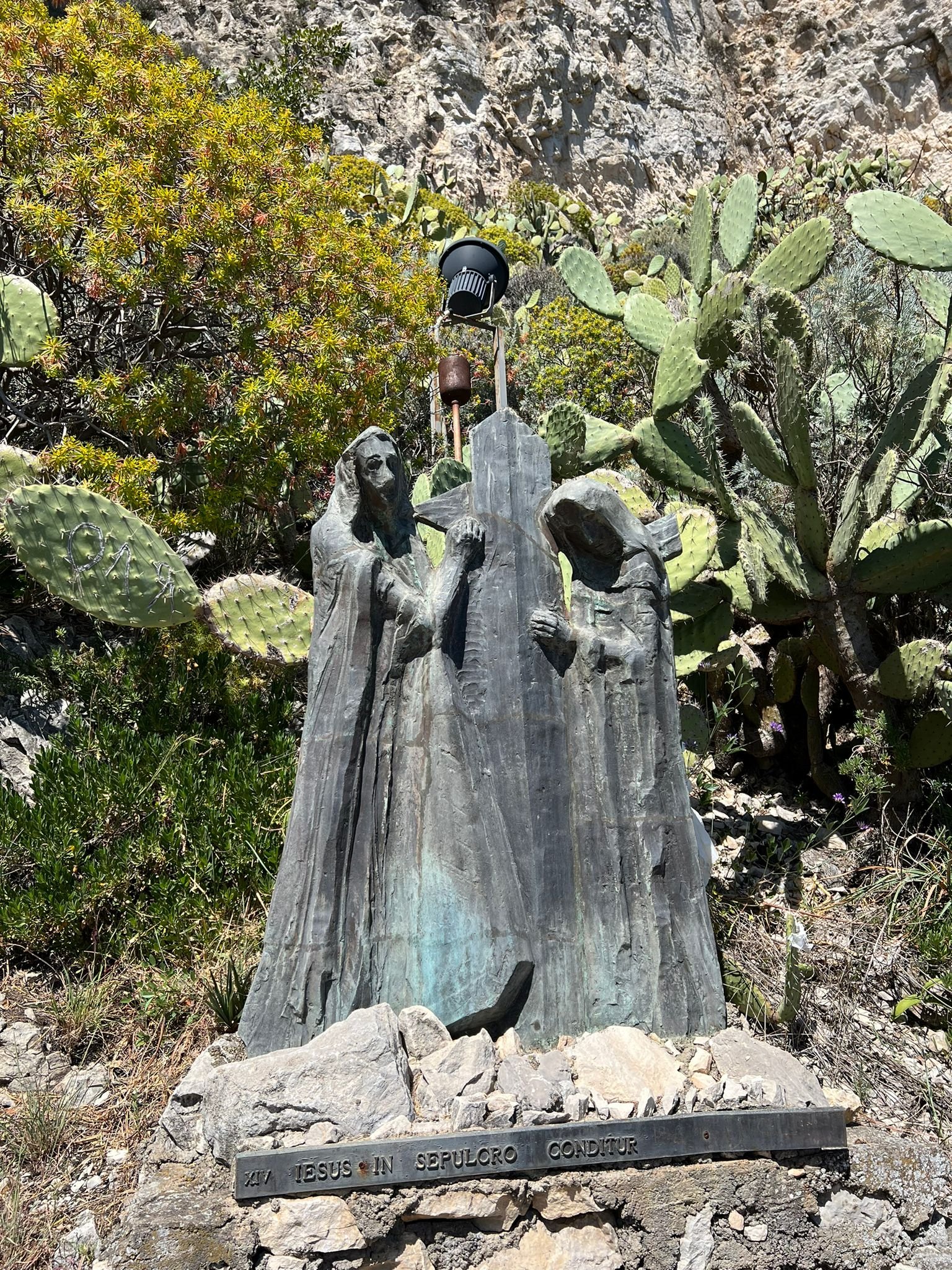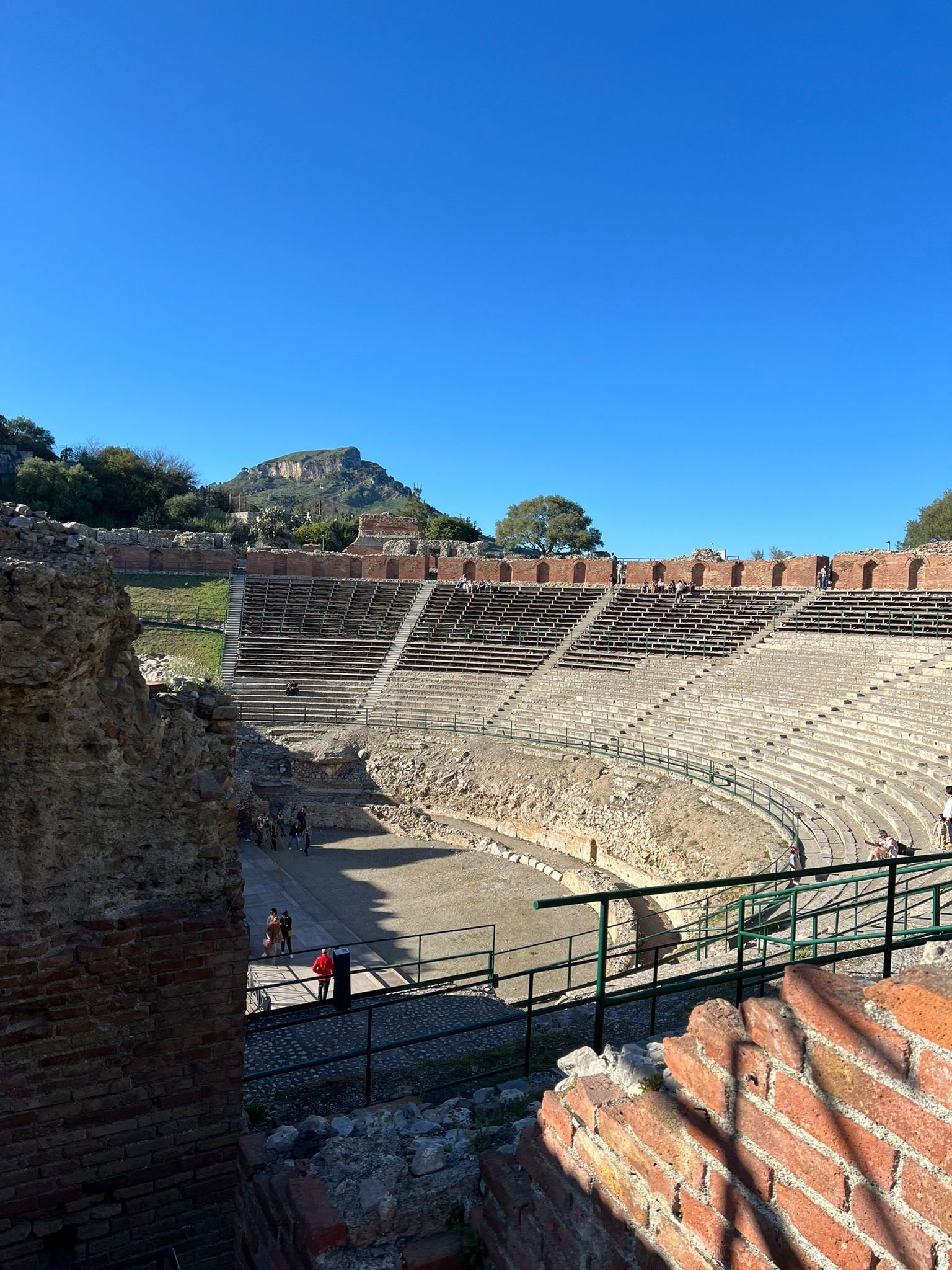Sicily - Spring 2024
As I publish this post, I am fully aware that it is Tuesday, a day of the week when memories of the weekend are still fresh (sigh!) and Friday seems impossibly distant (double sigh!) If you too are experiencing the Tuesday-blues: allow me to briefly transport you to Sicily, or more specifically Catania with a touch of Taormina and Siracusa. I was lucky enough to travel there earlier this month along with my sister, my friend Jeff (we go all the way back to our college days), and his lovely husband, Brenden.
I’ll get right to it: Sicily is arguably the most stunning region in a spectacular country. It’s got everything you want (and more), from stunning sea views to ancient ruins to stellar street food to an active volcano. Most important of all: it is the home of the beloved cannolo (one cannolo, two cannoli, never one cannoli, ok?)
The last time I visited Sicily I explored the Palermo-side of the island. This time around we made our base in Catania, which allowed us to also visit the nearby cities of Taormina and Siracusa. Both are just a little over an hour away by bus.
If I had written a post covering every site we visited, this would have become a very long read indeed. Therefore: I’ve decided to narrow things and share the main highlights — mostly food related, naturally — to keep things as short and sweet as possible. Read on!
FIRST THINGS FIRST: WHAT WE ATE + DRANK
Cocktails in Catania
I know, I know: cocktails aren’t exactly a specialty of Sicily, but Circus -- where we had aperitivo on our first night in Catania -- was so good that it would be a crime not to tell you more about it. Circus’s list of cocktails is extensive, and contains a few entertaining ingredients like “aria di mare” (sea air) and “fun” (self-explanatory) according to their respective descriptions. We enjoyed their twist on a Spritz called a Spritz du Soleil, a refreshing mix of Prosecco, Aperol, tangerine juice, and a scoop of lemon sorbet. We also sampled a specialty of Catania known as seltz, limone, e sale, or rather an equally refreshing concoction made with – you guessed it – seltzer, fresh lemon juice, and a little sea salt, the whole thing topped with fancy foam. If you find yourself in Catania, do add Circus to your itinerary – you won’t regret it. Bonus: they also host the stray stand-up comedy night, if that’s your thing. More details here, as well as a complete drink list for your perusal.
Arancini
Let’s get to it: an arancino (ah-rahn-CHEE-no) is a classic Sicilian street food, a fried rice ball made with different fillings or flavors. The arancino is quite large –tennis ball sized – and if made correctly, will be crisp on the outside, soft on the inside, and not at all greasy. It makes for a great lunch or abundant snack on the go. According to all locals we asked, the best arancini in Catania come from Pasticceria Savia, and they were (unsurprisingly) right. We bought and shared about 6 of them for dinner one night: pistachio, ragù with peas (as per Sicilian tradition), tomato and eggplant, spinach, and butter and cheese were our arancini of choice. Best of all: Pasticceria Savia churns out arancini until (an oddly specific) 9:20pm, meaning you can get your fix even late.
Fun fact: in Catania, and only in Catania, they’re called arancino, plural arancini. In all other parts of Sicily, they’re arancina, plural arancine. Important: arancini/e are not the same as supplì, which is the Roman-style fried rice ball. A supplì is smaller and more oval that the arancino, and have a tomato and mozzarella filling or a ragù filling.
Seafood + lunch with a view
Fact: If you’re going to eat seafood in Italy, Sicily is the place for it.
Also a fact: I don’t love seafood. I know, I know! It’s just that oysters are my least favorite food on the planet; I don’t eat octopus, because My Octopus Teacher; in Italy, fish and shellfish are usually served with scales, bones, and shells still intact, which I find wholly unappealing. I’m decidedly out of step with most Italians who across-the-board adore seafood (it’s what is served at weddings; a date who is trying to impress you will very likely offer to take you to a seafood restaurant). And yet!
In Sicily a meal with a little seafood is pretty much mandatory, and at the end of the day, there are a few tamer, not-so-fishy items that I eat and enjoy (especially spaghetti alle vongole; you can’t go wrong anywhere pasta is in the mix). In Catania, we had a stupendous lunch at Osteria Antica Marina, which is adjacent to the city’s famous (and chaotic) fish market — an experience in itself. Their carbonara di mare (seafood carbonara), fennel-infused arancini, fried shrimp, and paccheri with tomato-almond-pesto and shrimp were divine, perhaps my #1 meal during all of our stay. I also thoroughly enjoyed the impeccable fried shrimp and calamari and garlicky, wine-infused mussels at Il Saraceno in Taormina, a restaurant that allows you to simultaneously admire the impossibly azure Mediterranean, and feast on whatever seafood-y dish your vacationing heart desires. You will feel utterly White Lotus-y, guaranteed. For any non-seafood fanatics like me, know that they also serve an excellent pistachio pesto pasta, and pasta alla norma (read on).
Pasta alla norma
Though you’ll find pasta alla norma all throughout Sicily, it is a specialty of Catania. It was named in honor of the great catanese composer Vincenzo Bellini, the man behind the beloved opera Norma. Rumor has it that the Italian writer Nino Martoglio exclaimed "This is a real Norma!” – meaning masterpiece – upon tasting this dish, and while not confirmed, it makes sense: a good pasta alla norma is a true work of art. It traditionally consists of rigatoni or maccheroni tossed with fried eggplant, tomatoes, and ricotta salata, aka ricotta that's pressed, salted, and aged, with a briny, feta-cheese like flavor and a texture that is firmer than ricotta.
A dish (or two) of pasta alla norma was on the very top of my extensive To Eat in Sicily list, and I wasn’t disappointed. The best one I had was at A Putia in Siracusa: mild, unctuous eggplant (fried to perfection!) with lots of juicy sweet tomatoes and a heap of ricotta salata. Thank you to my long-time friend Ashot – who is lucky enough to be living in Siracusa, and who joined us for lunch – for the suggestion. As I’m currently in the throws of PANW (pasta alla norma withdrawal) you can bet I will be recreating this dish at home soon (stay tuned for the recipe).
P.S Vincenzo Belli is actually buried in the Cattedrale di Sant’Agata in the Catania city center — definitely worth a visit.
Granita
A specialty of Sicily, granita is and icy treat made with water, sugar, and a main ingredient, anything from fruit (lemon, mulberry, strawberry, to name just a few), nuts (pistachio or almond) or even coffee or chocolate. A good granita is mixed continuously to obtain a texture that manages to be both grainy and creamy at the same time, frozen but never fully. In Sicily, granita is traditionally eaten for breakfast (!) accompanied by the region’s signature brioche (a round, buttery bun topped with a knot called a tuppu) for dipping. If you’d like, you can add whipped – panna montata – to your serving (I do, always). If you’re feeling indulgent, you can add doppia panna, or dollops of whipped cream on the bottom and top of your granita.
Let’s cut to the chase: the granita that I ate at Bam Bar in Taormina is among the very best things I have ever eaten in my 35 years on this earth. Truly. I opted for a granita alla fragola (strawberry granita) with panna. It tasted exactly like a freshly picked strawberry, a perfect balance of sweet and tart, smooth and almost rich for being something made of fruit, sugar, and water, complimented beautifully by billows of freshly whipped unsweetened cream. The brioche that accompanied it was still warm from the oven, buttery, and fluffy. Rereading this description, I fully recognize I’m not doing it justice, so: make sure you get to Bambar at some point in your life.
We were so blown away by our granite that we ordered a fifth one to share: half chocolate granita, half hazelnut, whipped cream. I nearly wept when it was finished.
Cannoli
Sicily=cannoli, right? A few basics: a good cannolo is filled to order, to ensure that the shell has a good crunch; said shell should be shattery and crisp; the ricotta should be sheep’s milk ricotta, drained to eliminate any extra moisture, and whipped until thick and creamy (grainy ricotta need not apply) with just the right amount of sugar. It sounds simple, but the devil is in the details —with just a few ingredients, a cannolo has little to hid behind.
All the local catanesi that we polled pointed us to the same cannolo haven: Caffè Europa. Now: it’s a bit of a walk from the center of Catania (indeed, there were more locals than tourists) but it was well worth it. My breakfast cannolo – speckled with pistachios for extra crunch -- was true perfection, checking every last Good Cannolo box and then some. I cannot recommend these cannoli enough if you find yourself in Catania. Please go.
Also: the coffee was excellent, as were the other pastries we tried — freshly made, nothing that had been made a few days prior and served anyways, necessary when running a business but still always a bit disappointing — which is surprising given the fact that Caffè Europa is quite large. The operation runs like a well-oiled machine, and aside from serving up great cannoli, also offers stellar cornetti, cookies, pasticcini (little pastries), gelato, frutta martorana (“fruit” made from marzipan), arancini, typical Sicilian rosticceria (cheese, veg, etc in pastry). See for yourself here!
THE SITES
Mount Etna
Not that it needs much introduction, but: Mount Etna is an active (!) volcano on the east coast of Sicily, located between the cities of Messina and Catania. Eruptions are common -- it last erupted in November 2023 -- and it is anyways in an almost constant state of activity. Indeed, Etna was putting on quite the show as recently as two weeks ago: see here.
I was a bit skeptical of any sort of visit to Etna at first. Now that you know I’m not a huge fan of seafood, I’ll also add that hiking, camping, and any other sort of nature-based activity is not really my jam (conversely, I am excellent at watching Netflix on my couch). Having said this, I’m so happy that we went to visit the volcano (thanks for pushing us, Jeff!) We booked our excursion with Etna Tribe (highly recommended, more information here) and were able to drive up to the volcano, go for a hike, get a firsthand look at some of its craters, and venture inside a volcanic cave. The views were beautiful, and we learned a lot about Etna thanks to our guide Claudio. A few fun Etna facts: the volcano renders the surrounding soil quite fertile, making it perfect for surrounding vineyards, orchards, and agriculture in general; as a result of this volcanic soil, the wines from Etna are quite mineral-y; older lava is gray, and newer lava is black; according to Greek mythology, the deadly monster Typhon was trapped under this mountain by Zeus, and the forges of Hephaestus were said also to be underneath it.
After a long morning of hiking and adventuring, we were also treated to a wine and cheese tasting at Etna Winery. Needless to say we all took a nap in the van on the way back to the city center (wind, sun, wine, and 4 shots of different digestifs following your tasting will do that to you).
Bonus: we had the best time with a group of other Etna-enthusiasts (we were a mix of French, Indian, Finnish, British, and American) and I hope our paths cross again either in Rome or elsewhere at some point!
Monastero di San Nicolò l'Arena
On our last day in Catania, we took a tour of the Monasterio San Nicolò l'Arena, the second largest Benedictine monastery to ever be constructed in Europe. It’s corresponding church (Chiesa San Nicolò l'Arena) is located right around the corner, and is also worth a visit.
A little background: the monastery was founded in 1558 but was damaged by two natural disasters in the 17th century: a volcanic eruption in 1669 (the notorious Etna –you’ll see quite a few lava formations around the monastery) and the Val di Noto earthquake in 1693, where only the basement was spared. The monastery was eventually rebuilt on the top of the original one in the Baroque style, with construction finishing in 1866. the new Reign of Italy took charge of the monastery.
Nowadays, it’s a site that wears many hats: apart from its stint as a monastery, it’s also a UNESCO World Heritage Site and hosts the Department of Humanities of the University of Catania. The site is full of impressive gardens, winding marble staircases, lots of frescoes, and a library that houses ancient ruins. Many of the professors’ offices also house original frescoes with seaside views. Lucky students and faculty!
That about wraps up the highlights from a spectacular 5 days in Sicily. If you’re thinking of planning a trip to the region — it seems to be the It Girl of vacation destinations since HBO’s White Lotus? — feel free to write me at pancakesbiscottiblog@gmail.com for further guidance or suggestions.
I’ll leave you with…



